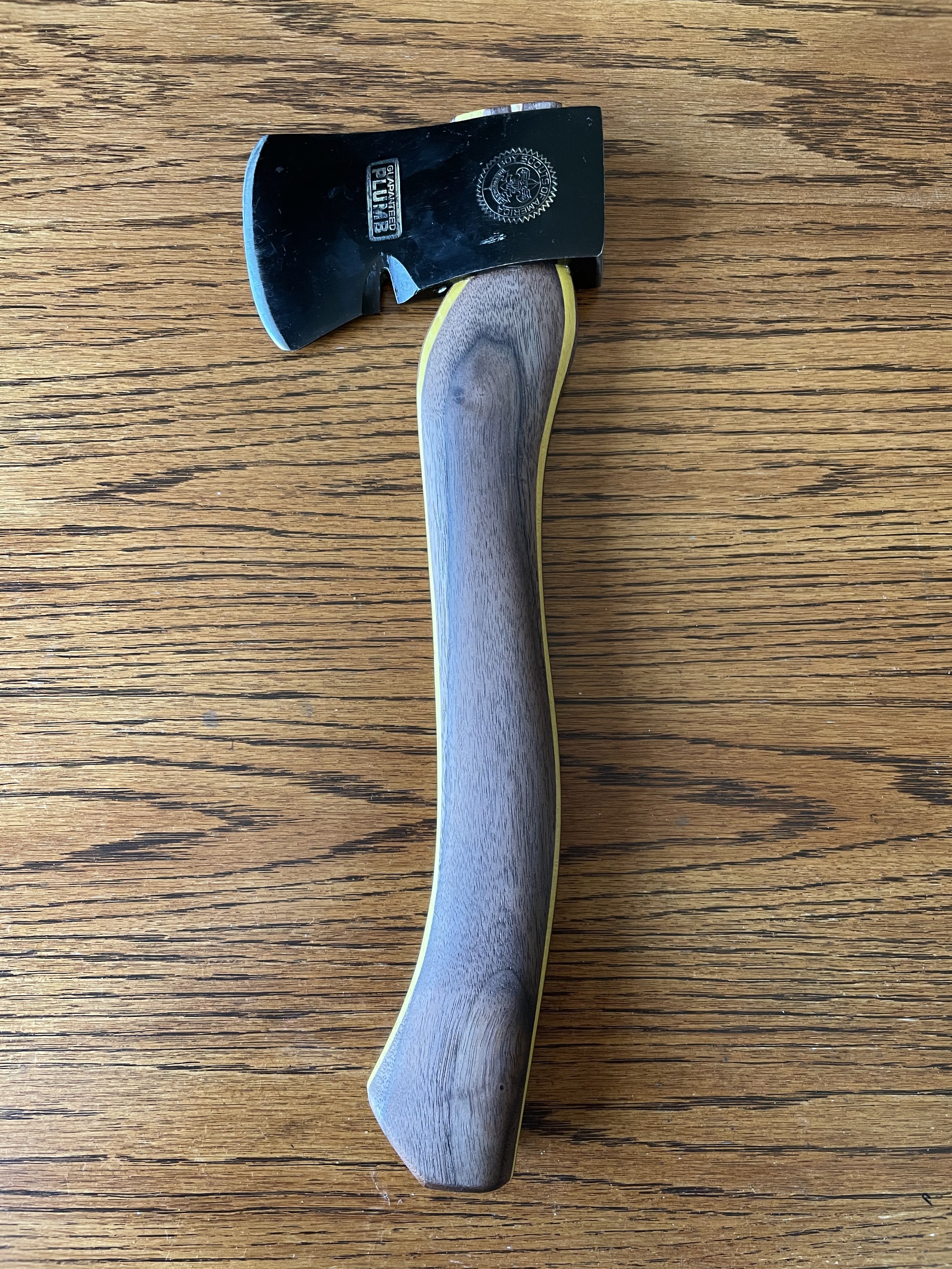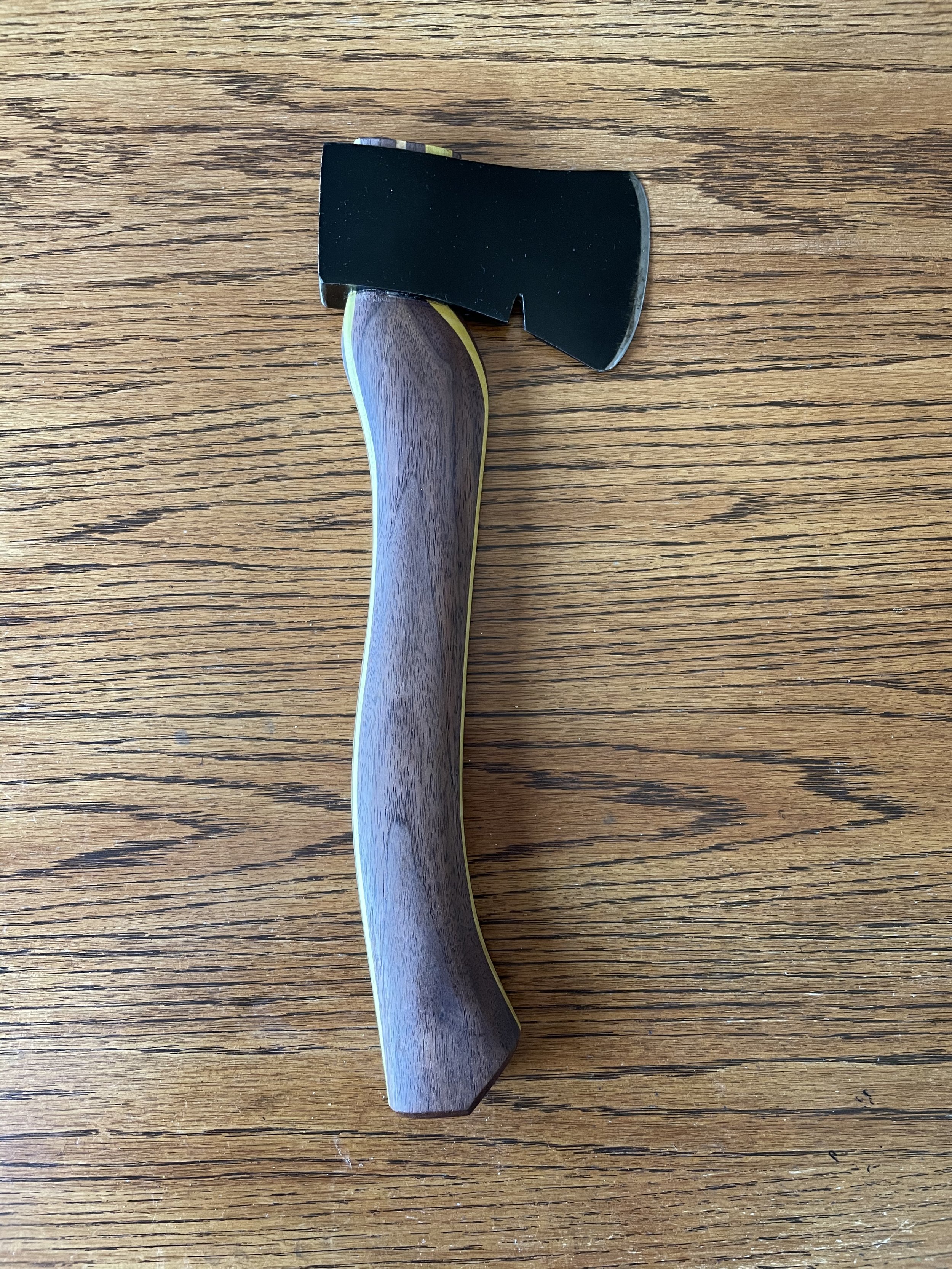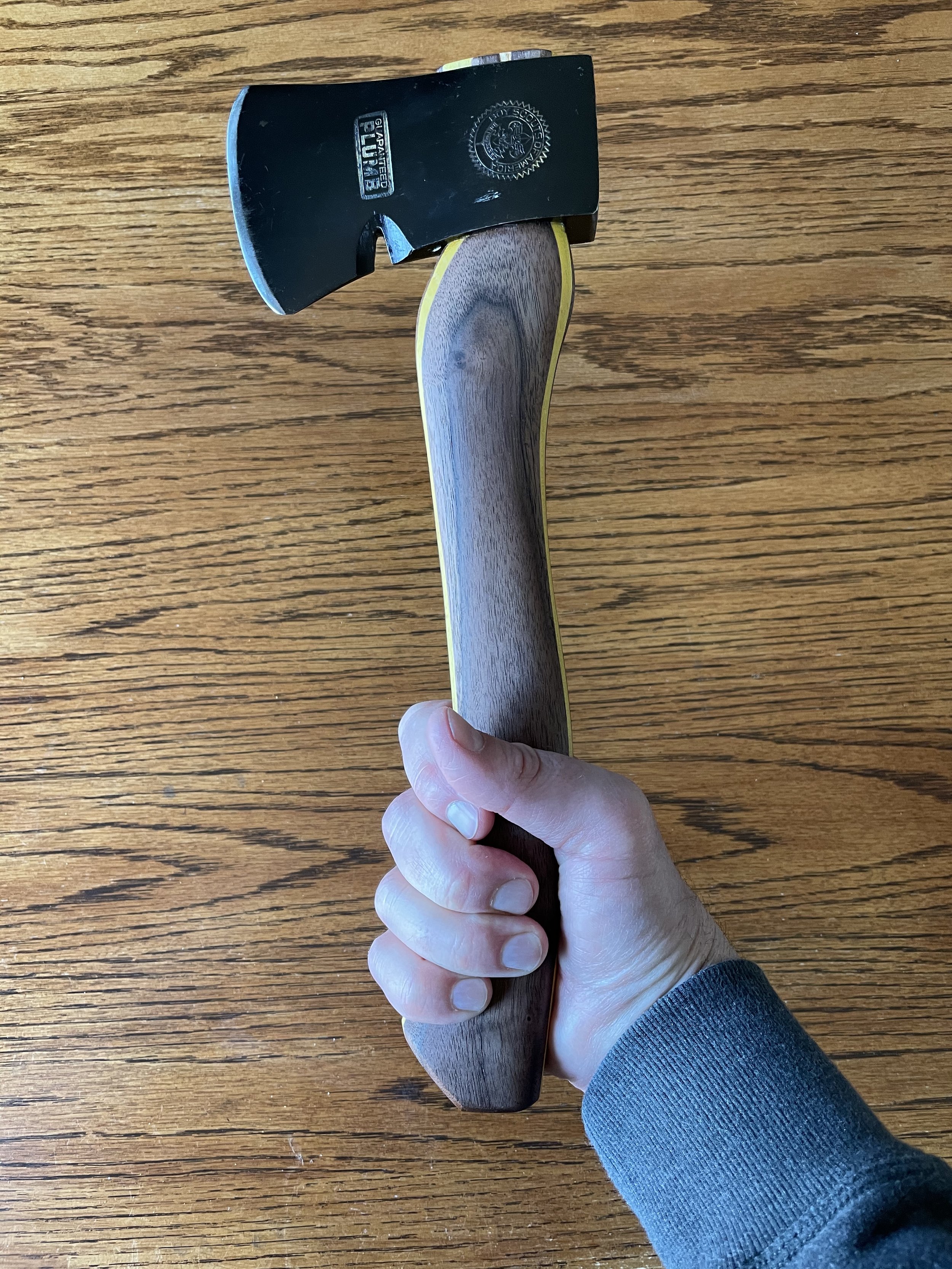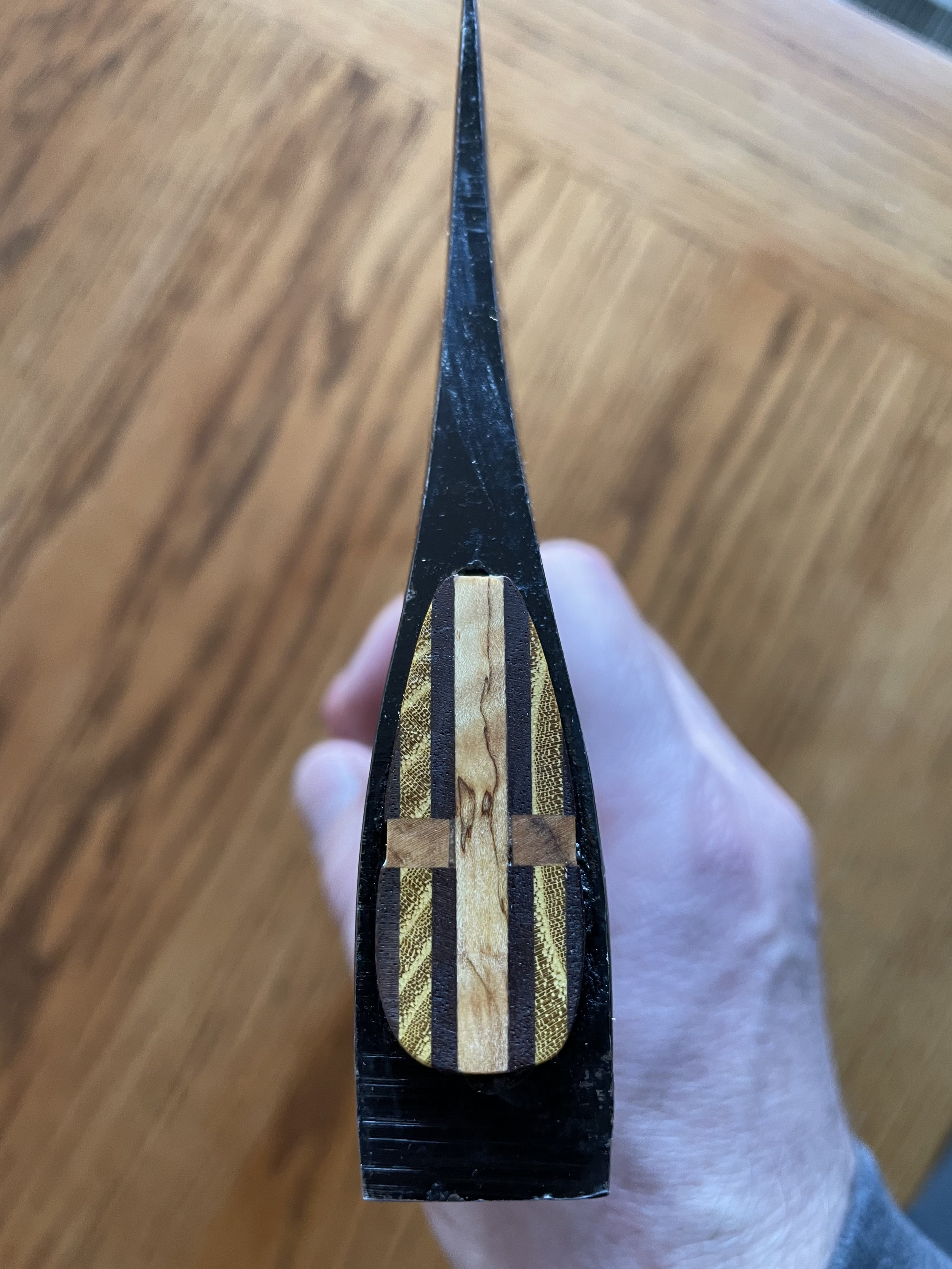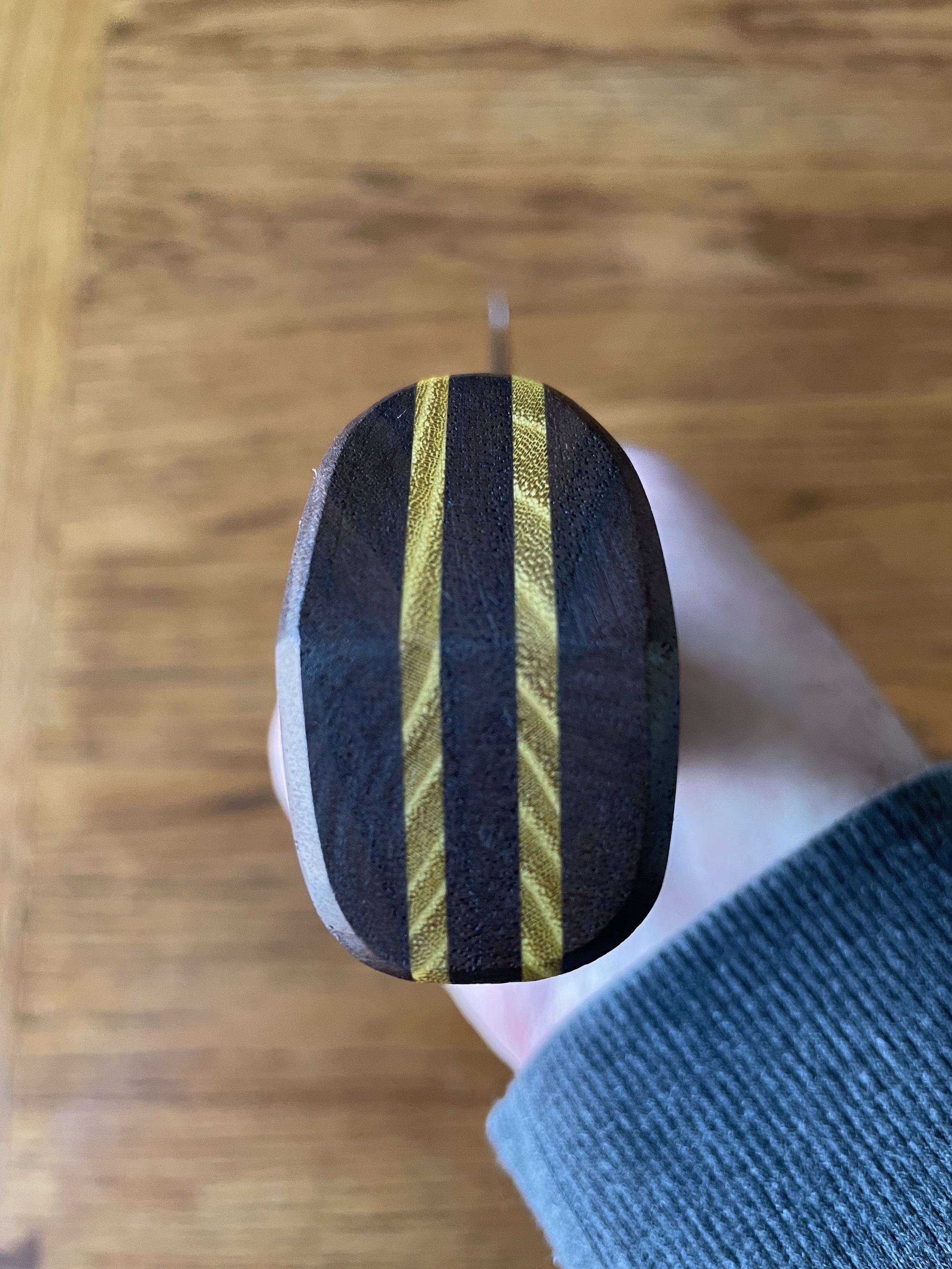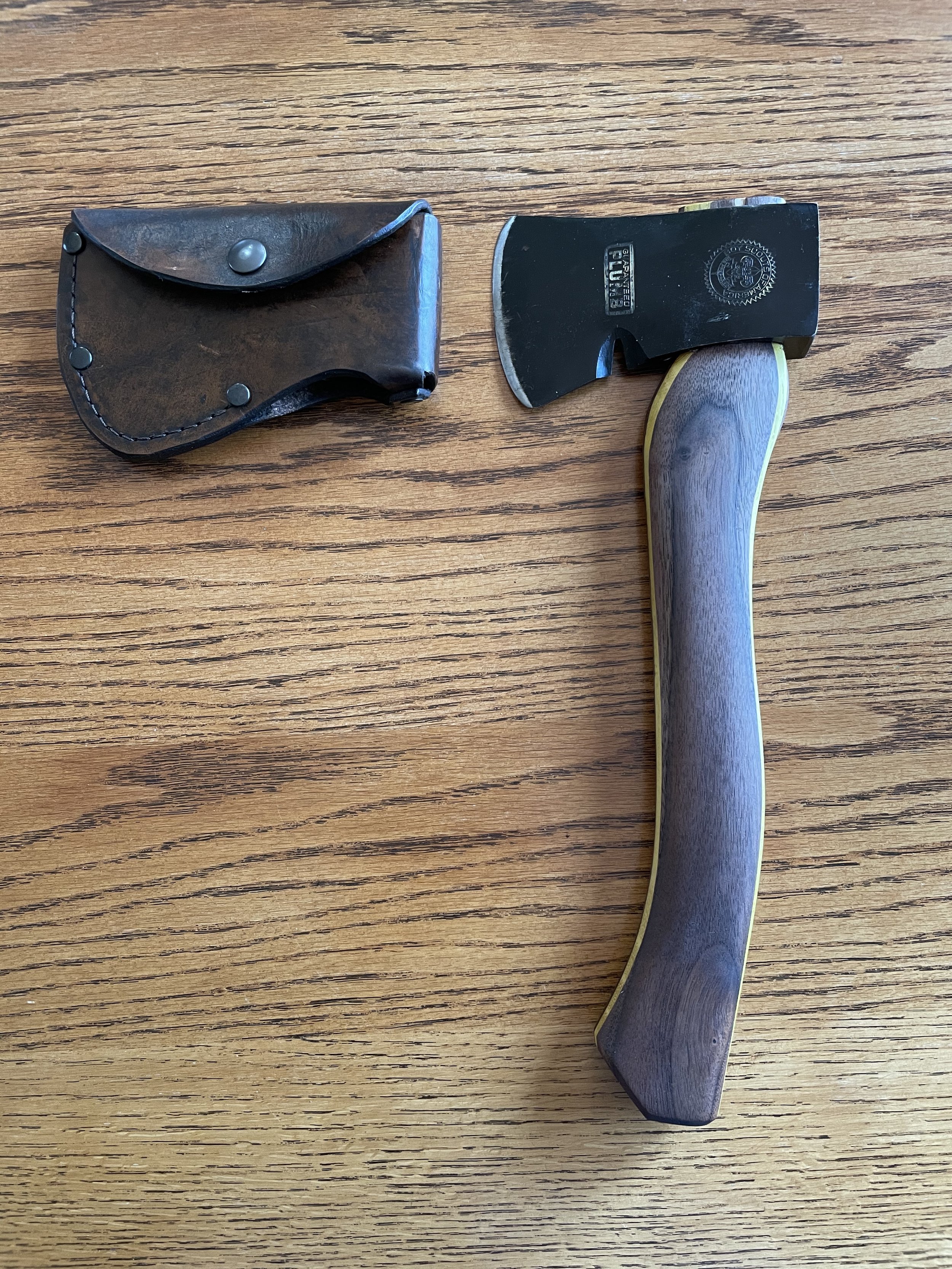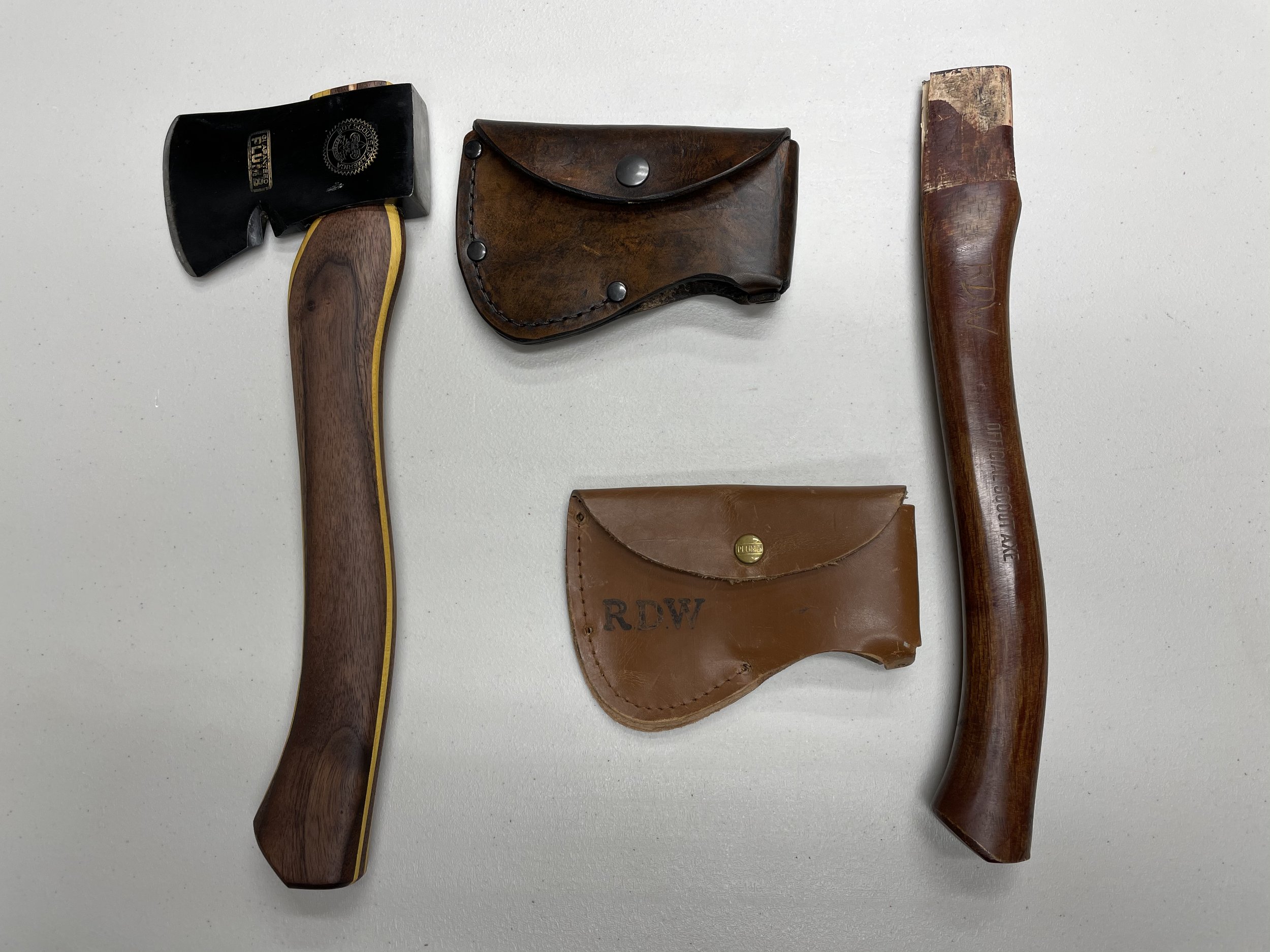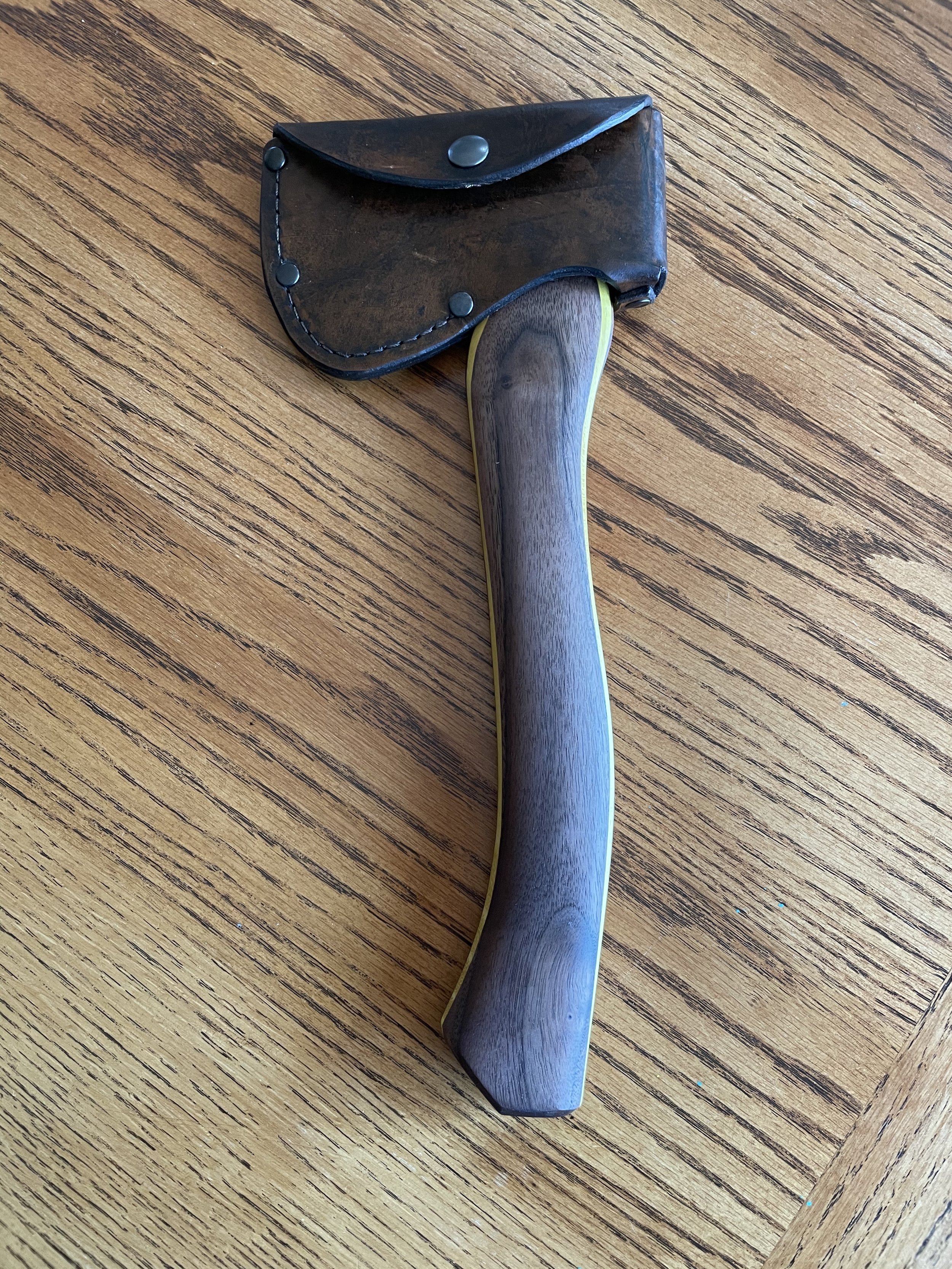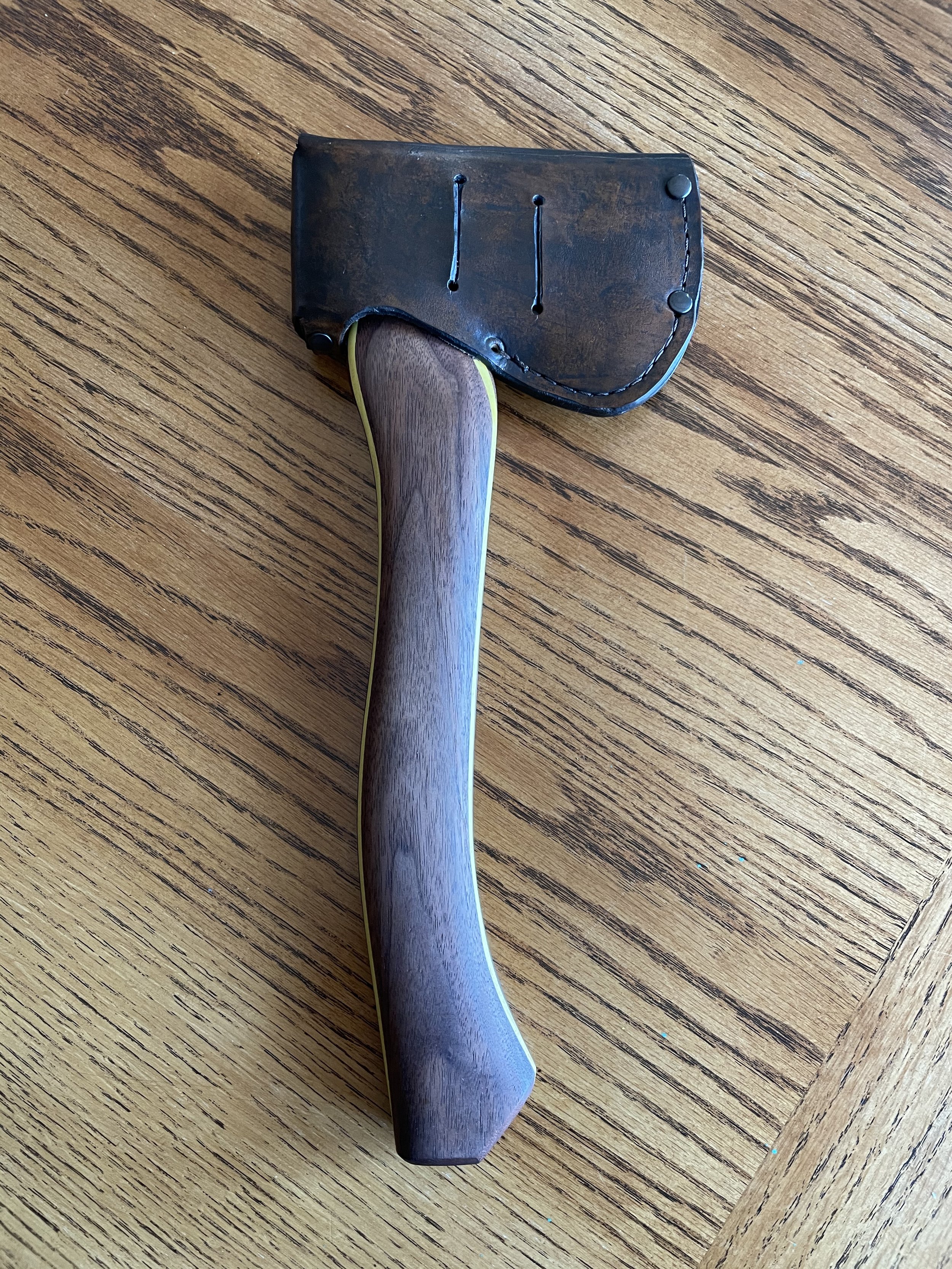Boy Scout Hatchet
Click here to subscribe to my YouTube channel.
Like all of us, the biggest thing I am a fan of is my family. I am proud of where I came from and proud of where we are all going. My oldest son earned his Eagle Scout and I wanted to make something to commemorate the event. I wanted to make something that would celebrate his accomplishment and also tie it together to past generations.
I was able to find an old Boy Scout hatchet that had the Boy Scout logo engraved in the side of the hatchet head, but the handle needed to be replaced as the original owner had carved his initials in the side of the handle. I decided to make a new handle using wood from our family farms. The new handle would have wood from my son's grandfather's farm, great-grandfather's farm, and great-great-grandfather's farms. Little did I know that my father still had some pieces of walnut from his grandfather's farm. That make it my son's great-great-grandfather's farm. How cool is that - wood from the farms of three generations of his ancestors.
In this write up I will take you through the process of how I created this keepsake for my son.
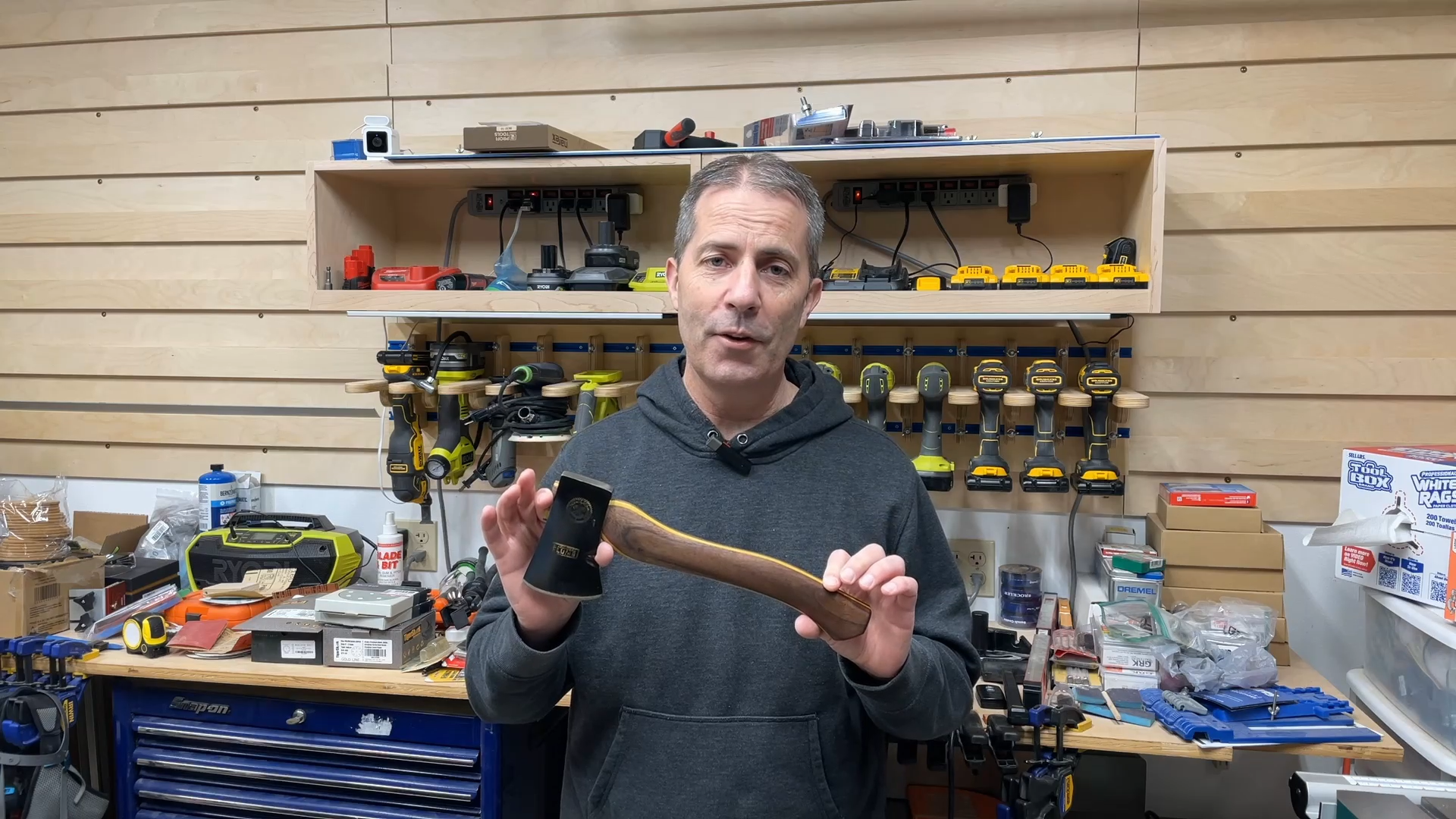
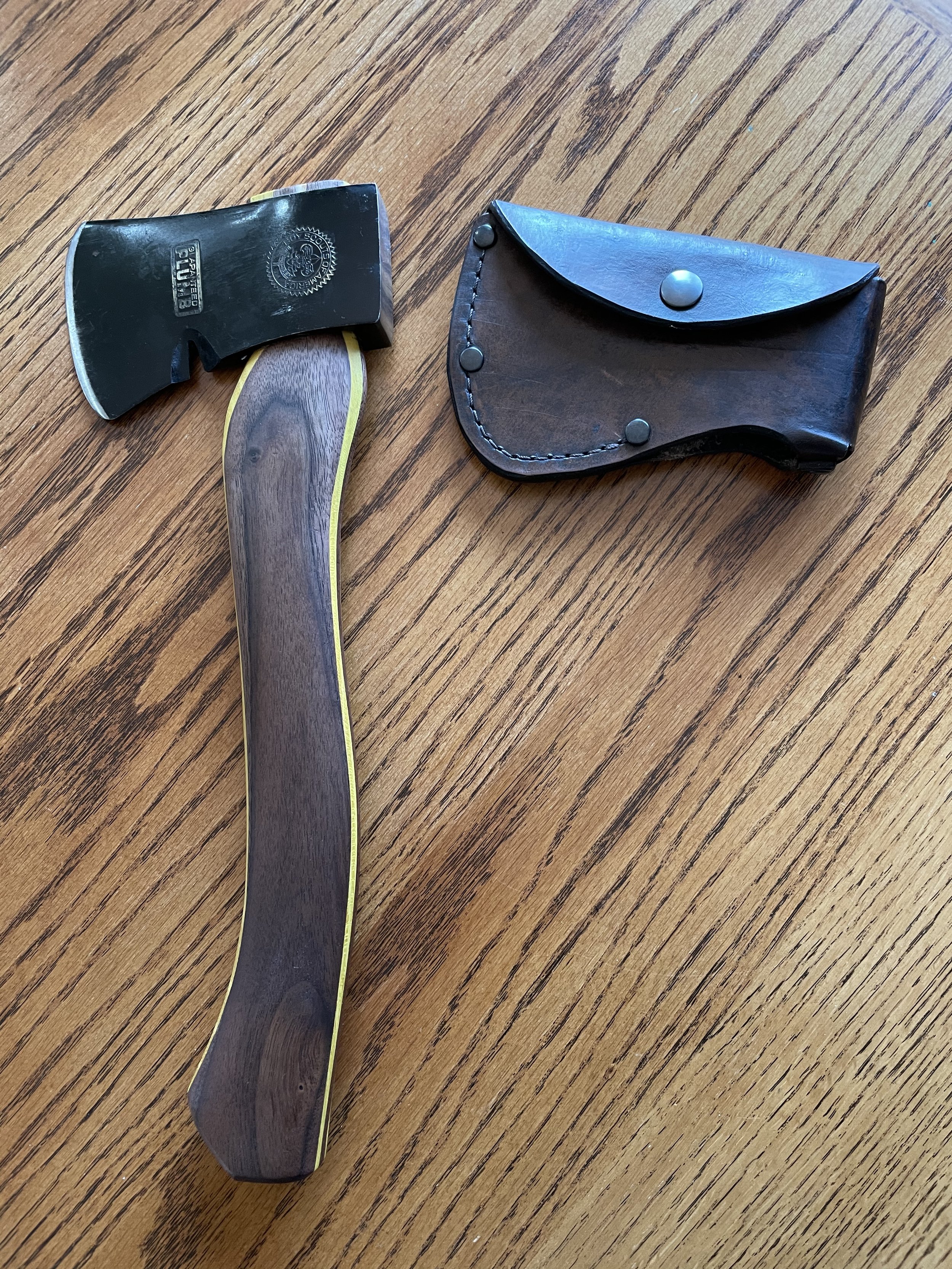
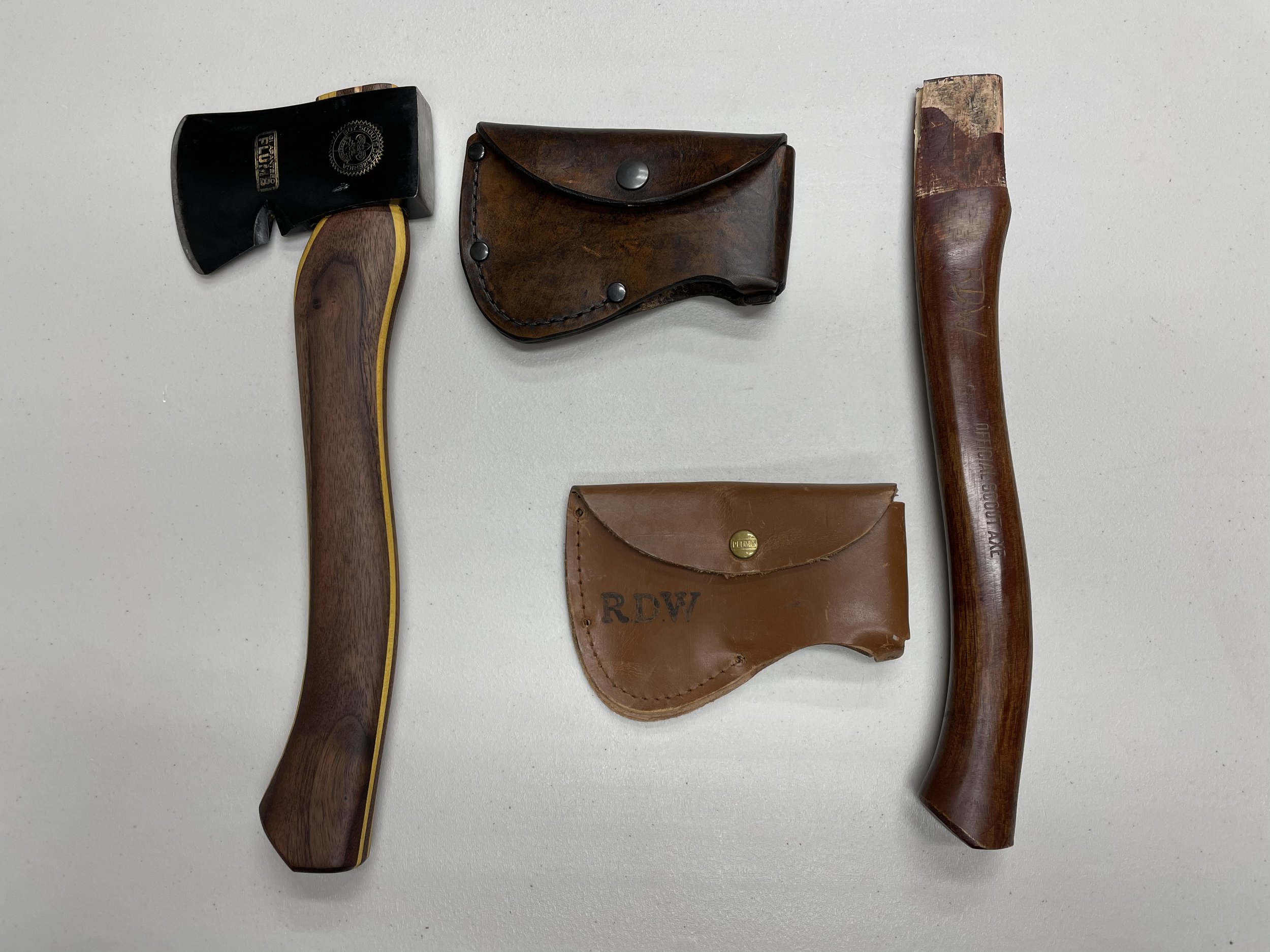
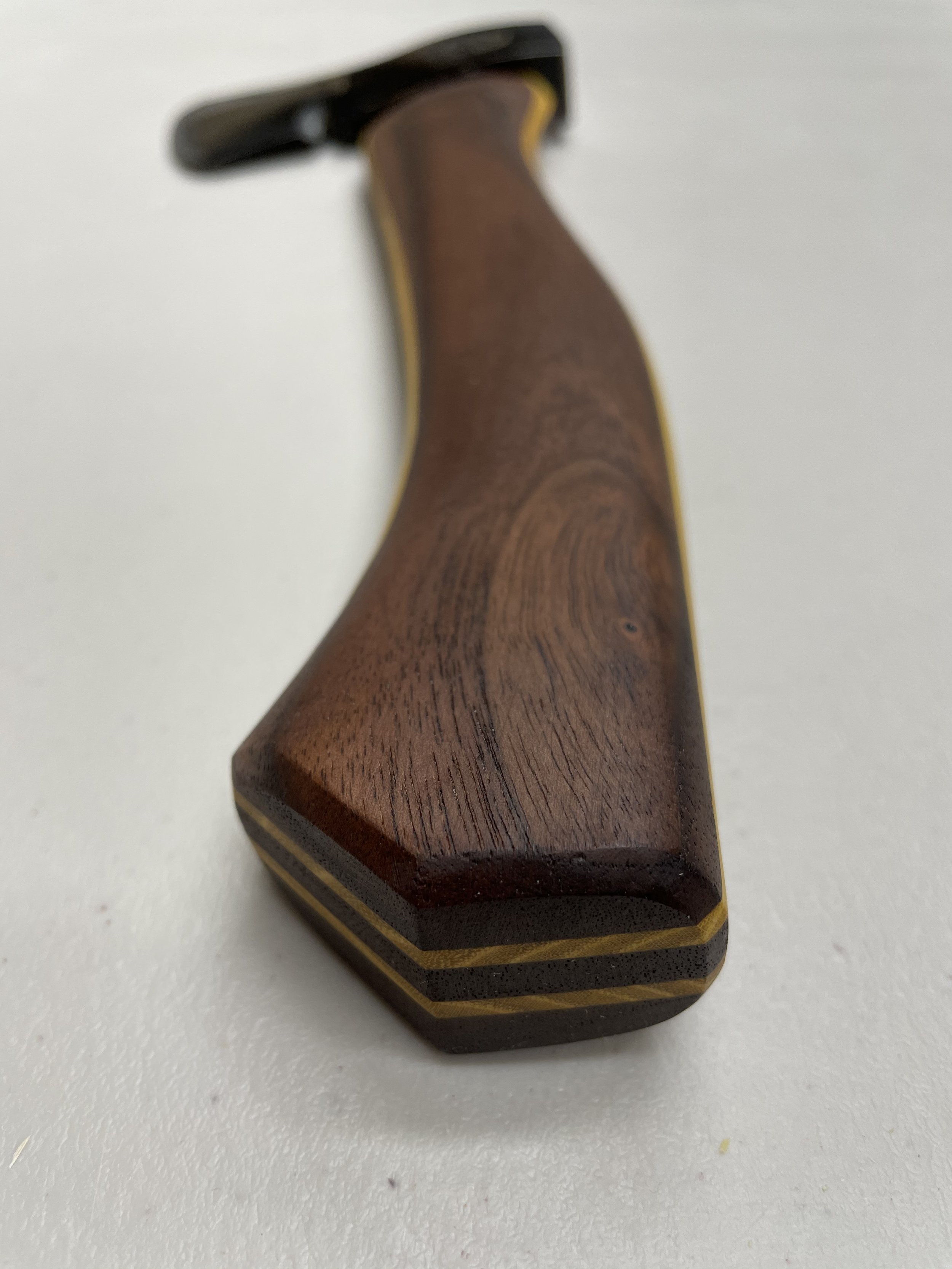
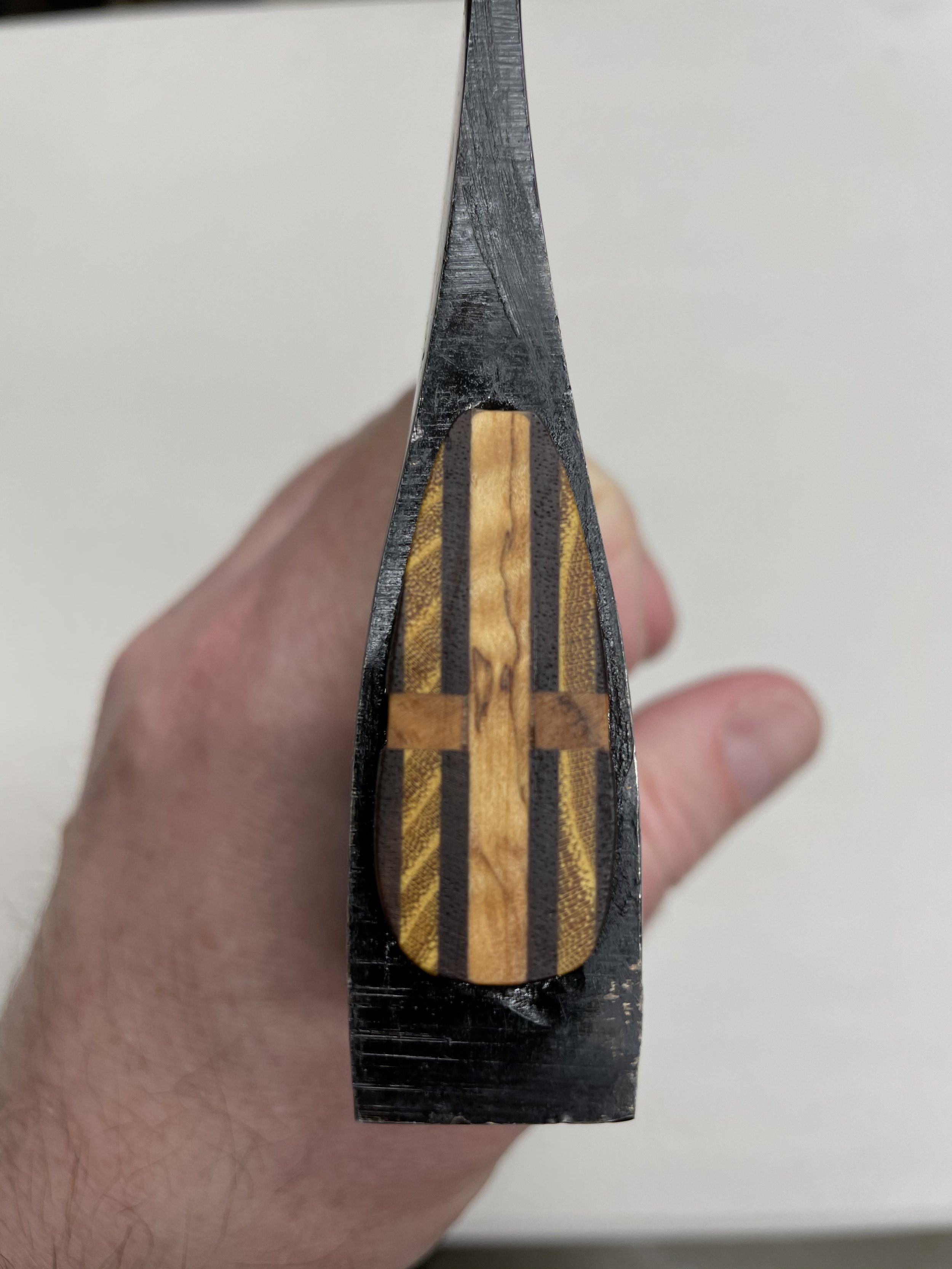
Step 1: Tools and Materials
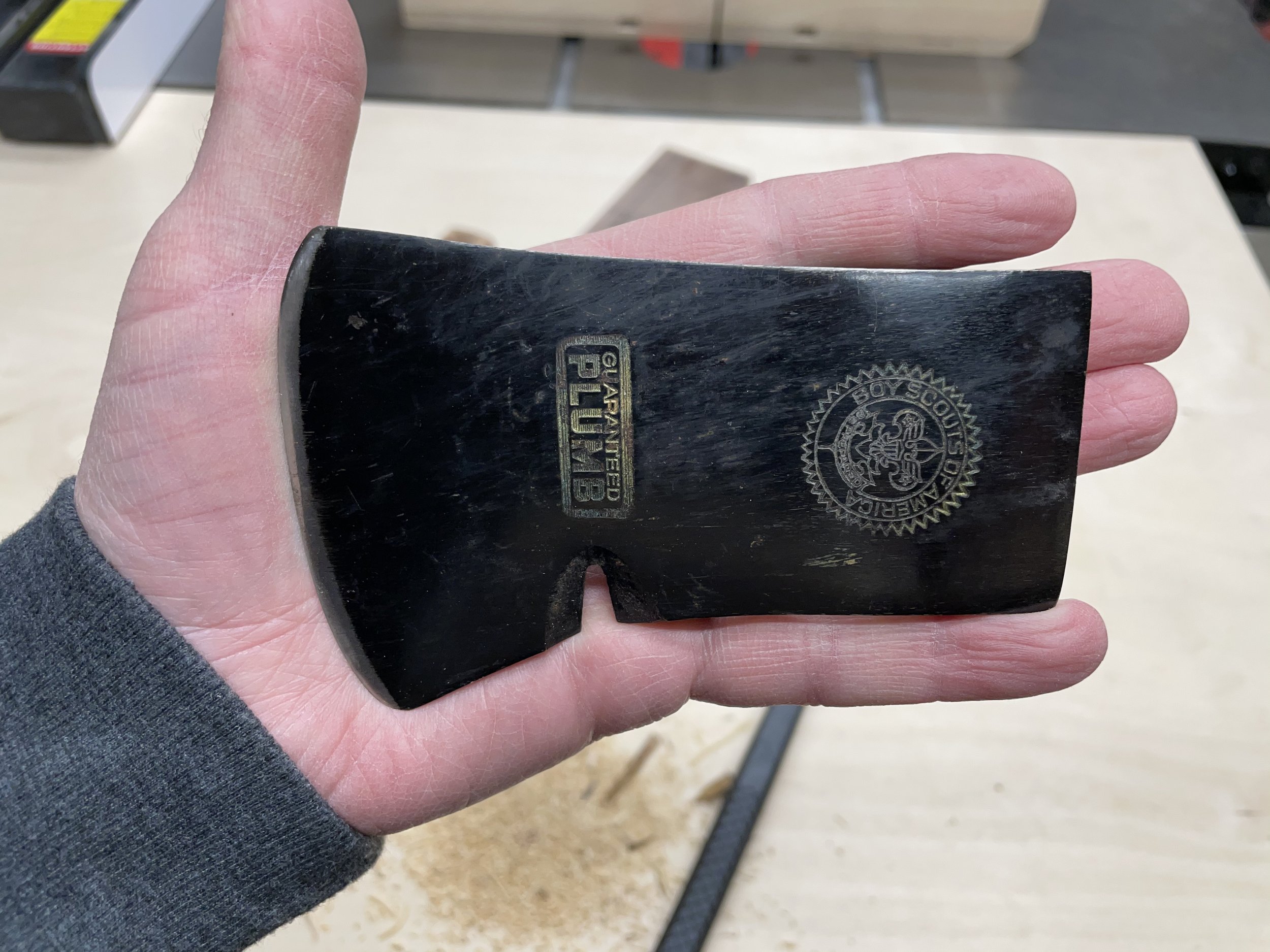

TOOLS
The tools I used on the project were as follows:
Saw Stop table saw - https://amzn.to/3a8znCE
Grizzly 14" Band Saw
Random orbit sander
Shinto Rasp (This thing is amazing!) - https://amzn.to/3j8VI81
Shop vac
Tape Measures (my favorite two):
Fastcap PMS-16 Auto Lock ProCarpenter Tape Measure - https://amzn.to/333fTMN
or FastCap PSSR16 16 ft Standard Reverse Measuring Tape - https://amzn.to/35eQe6k
Clamps
Drum Sander (Not necessary, but convenient)
MATERIALS
Sand paper
Odie's Oil wood finish - Universal - 9oz Jar (A little goes a long way) - https://amzn.to/2Fd7he6
NOTE: As an Amazon Associate I earn from qualifying purchases.
NOTE: If you plan on using any tool for a project please make sure you are familiar with the tool and all of the dangers associated with it. If you are not familiar with a tool then you should ask someone who is to show you the proper way to use it. A lot of communities have classes at local colleges on the proper use of tools and machinery. There are also local woodworking clubs that offer classes at very reasonable rates for beginners. I highly recommend using these resources for your safety and for the most efficient use of the tool.
SAFETY FIRST
Always wear eye and hearing protection.
Always work safe with the proper safety equipment and guards on your tools.
NOTE: As an Amazon Associate I earn from qualifying purchases.
Step 2: Wood Selection Process
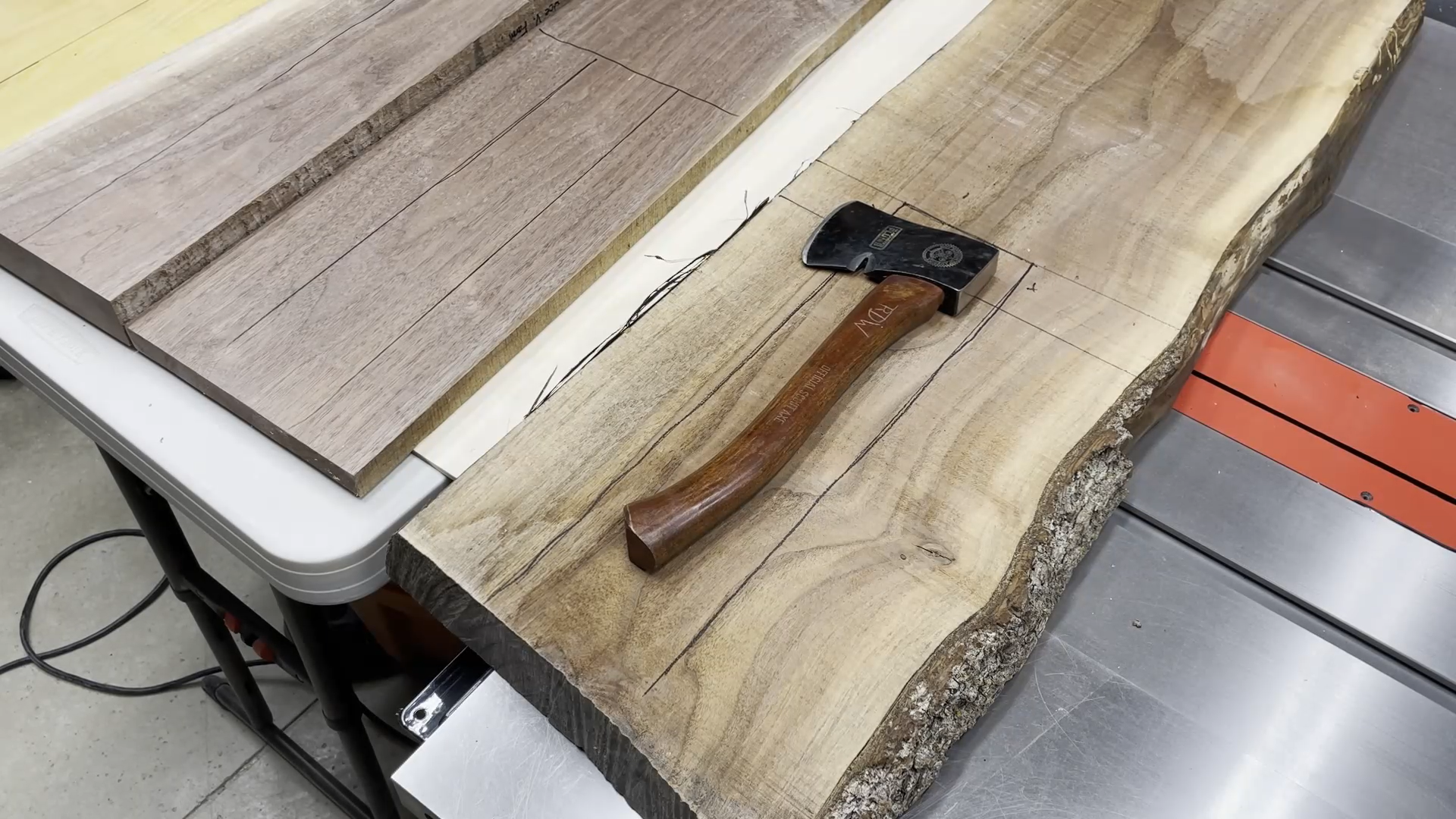
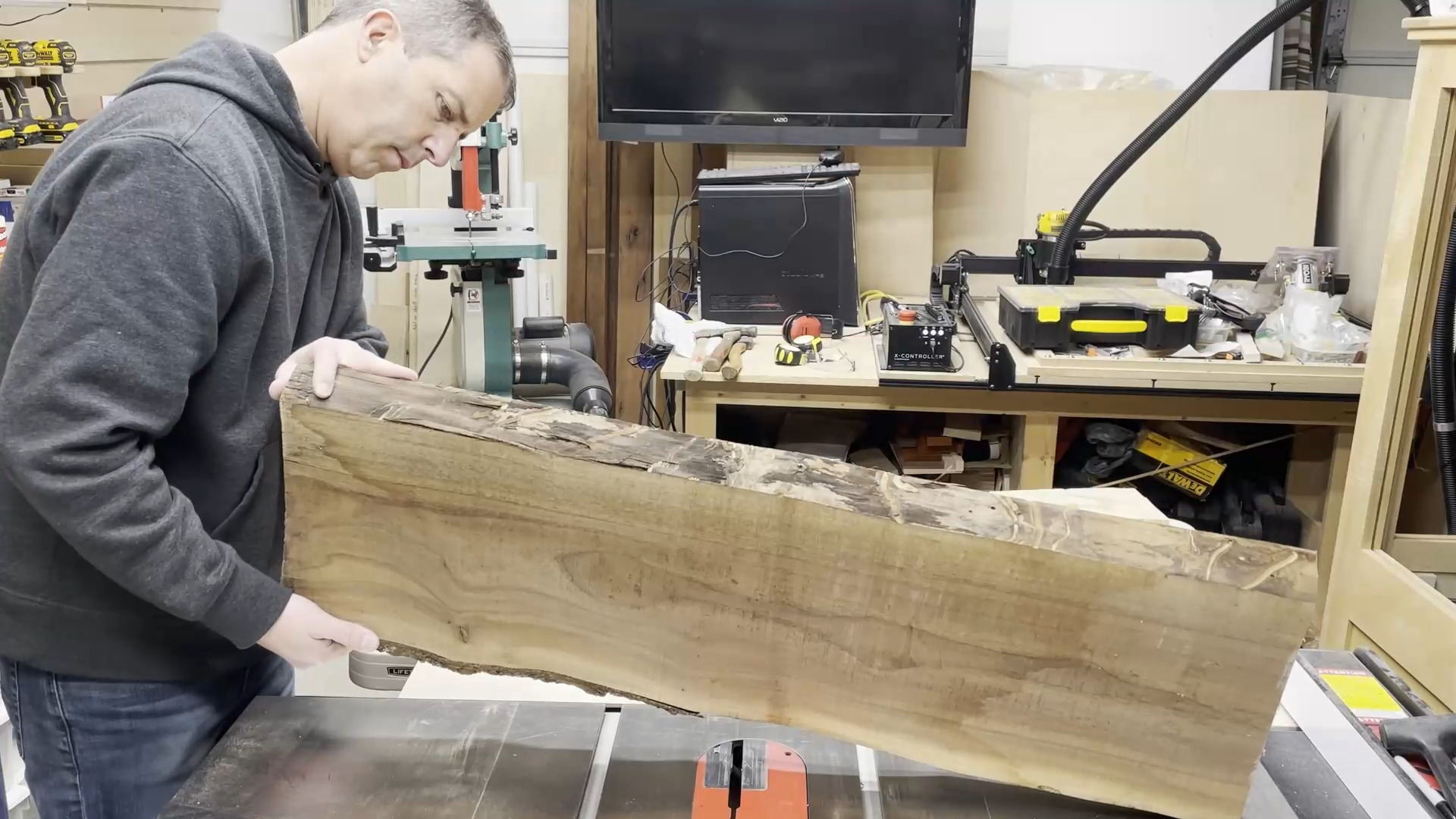
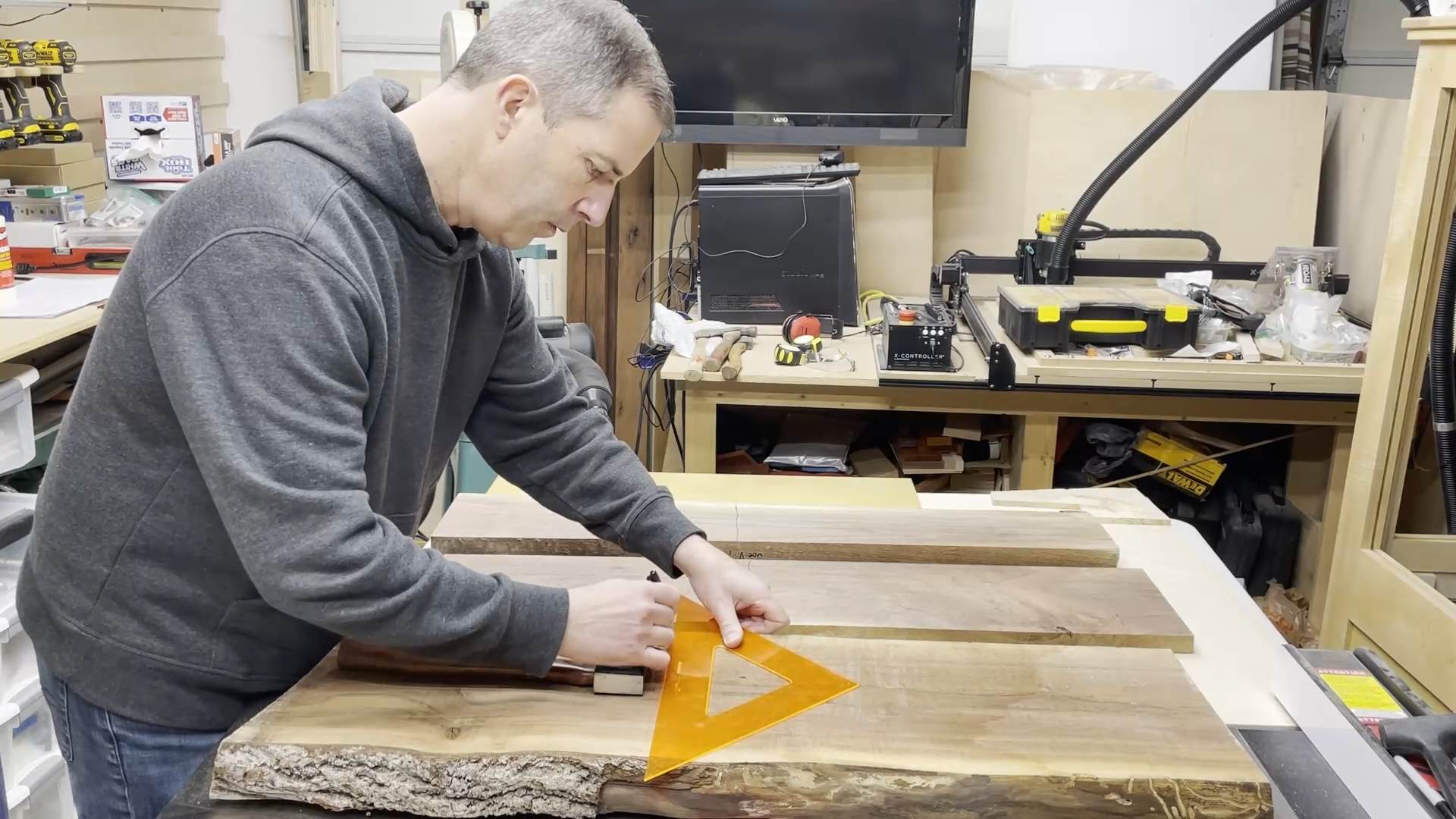
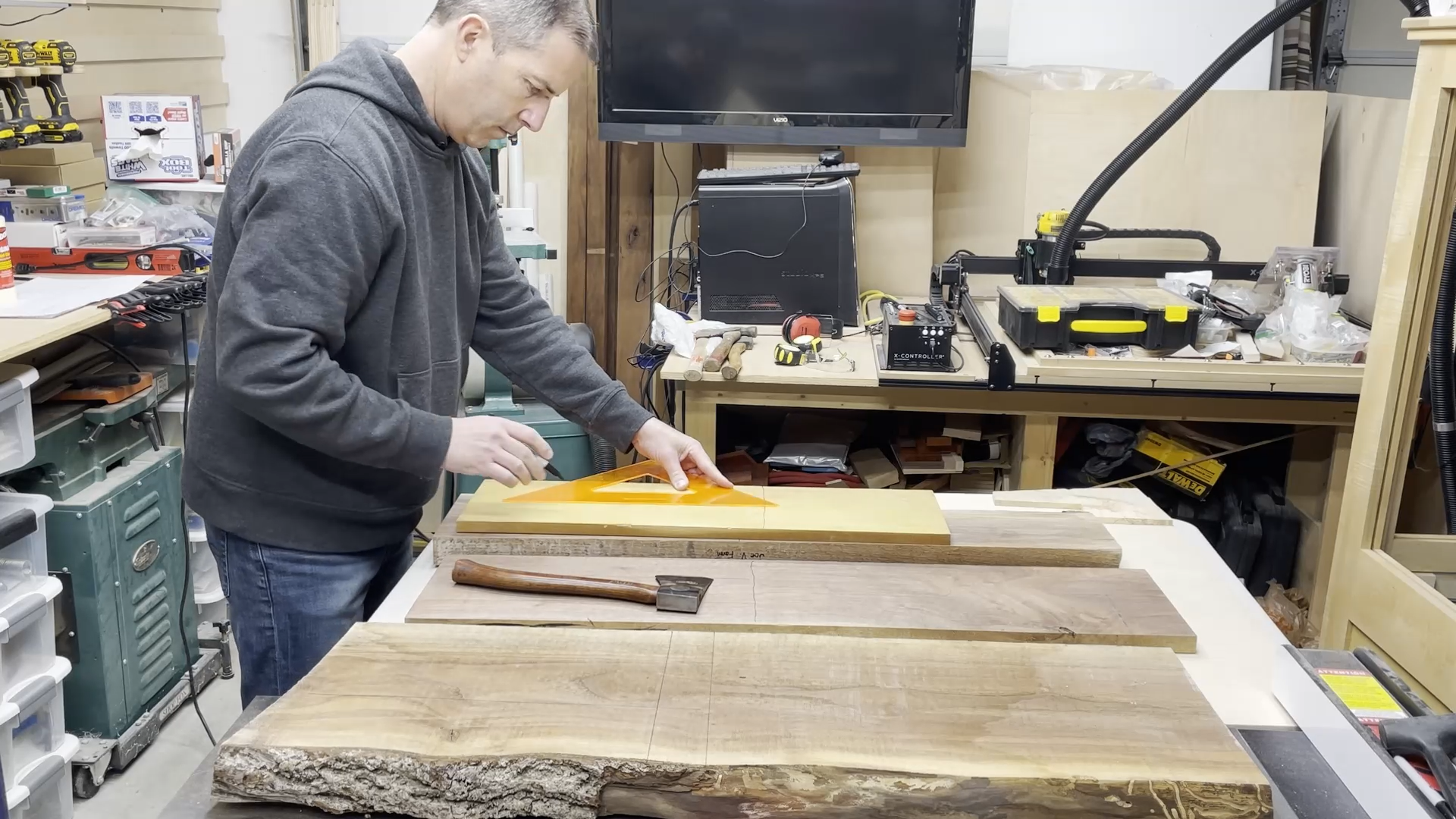
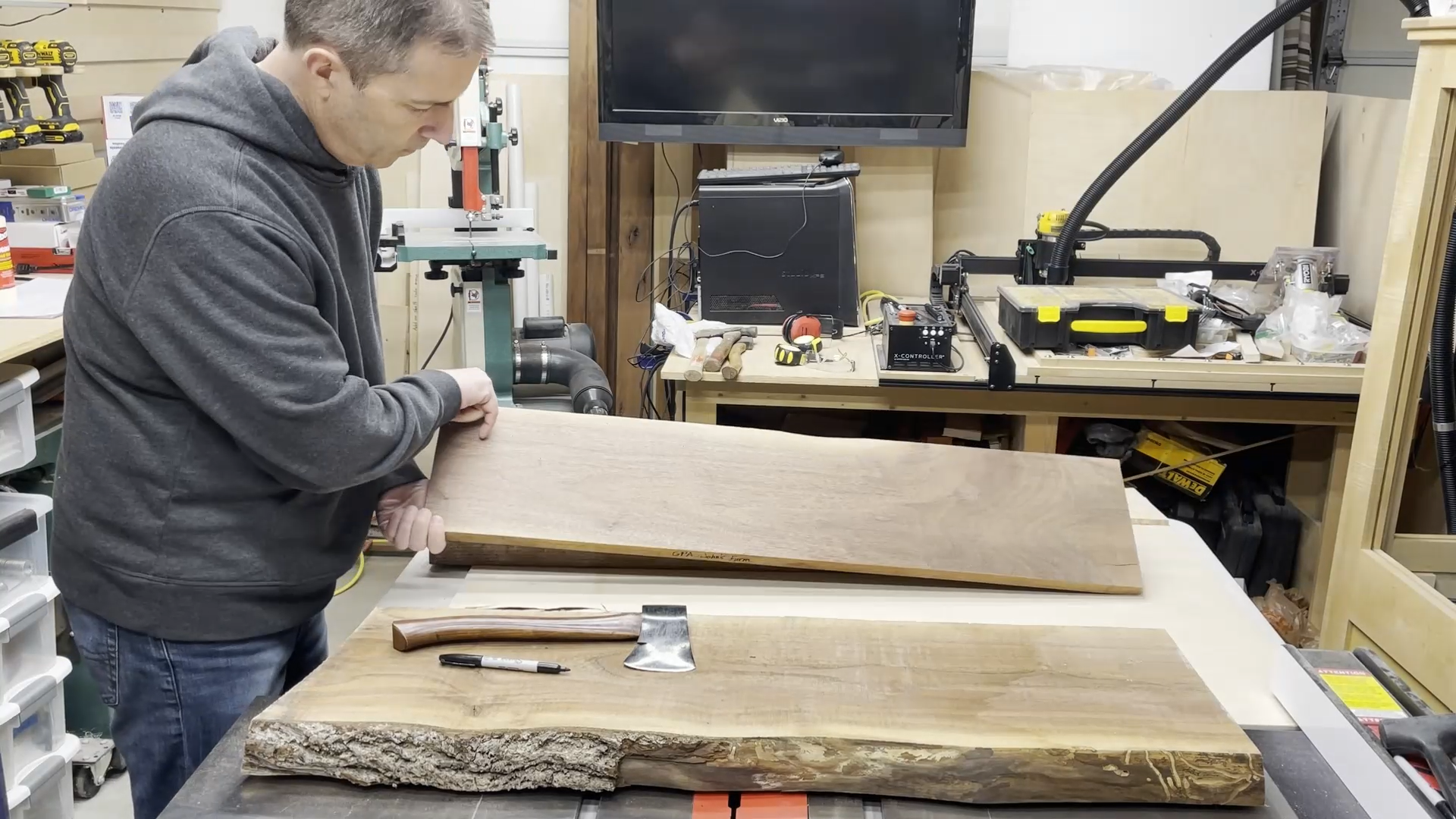
I wanted this project to be special and had some wood available from my family's farms. It turned out that my father had walnut from his farm, his father's farm, and his grandfather's farms. I thought it would be great to layer these up for the three generations. In between the three layers of walnut I decided to add a layer of osage orange. Osage orange is also called hedge and farmers use it for fence posts due to how rot resistant it is. It is the yellow colored wood and I thought it would be a nice contrasting layer.
For the wedges in the top of the handle I decided to use some spalted maple from the maple tree that used to be in my parents front yard when I was growing up. I played under that tree all the time and as I got older I climbed around in the branches for hours on end.
Step 3: Handle Design


The design of the handle was not far off from the original handle, but I did thicken up the base of the handle below where you grip in order to help with holding on while cutting. It's a little hard to explain the differences, so probably the best thing to do is compare the photos.
Step 4: Remove Old Hatchet Head

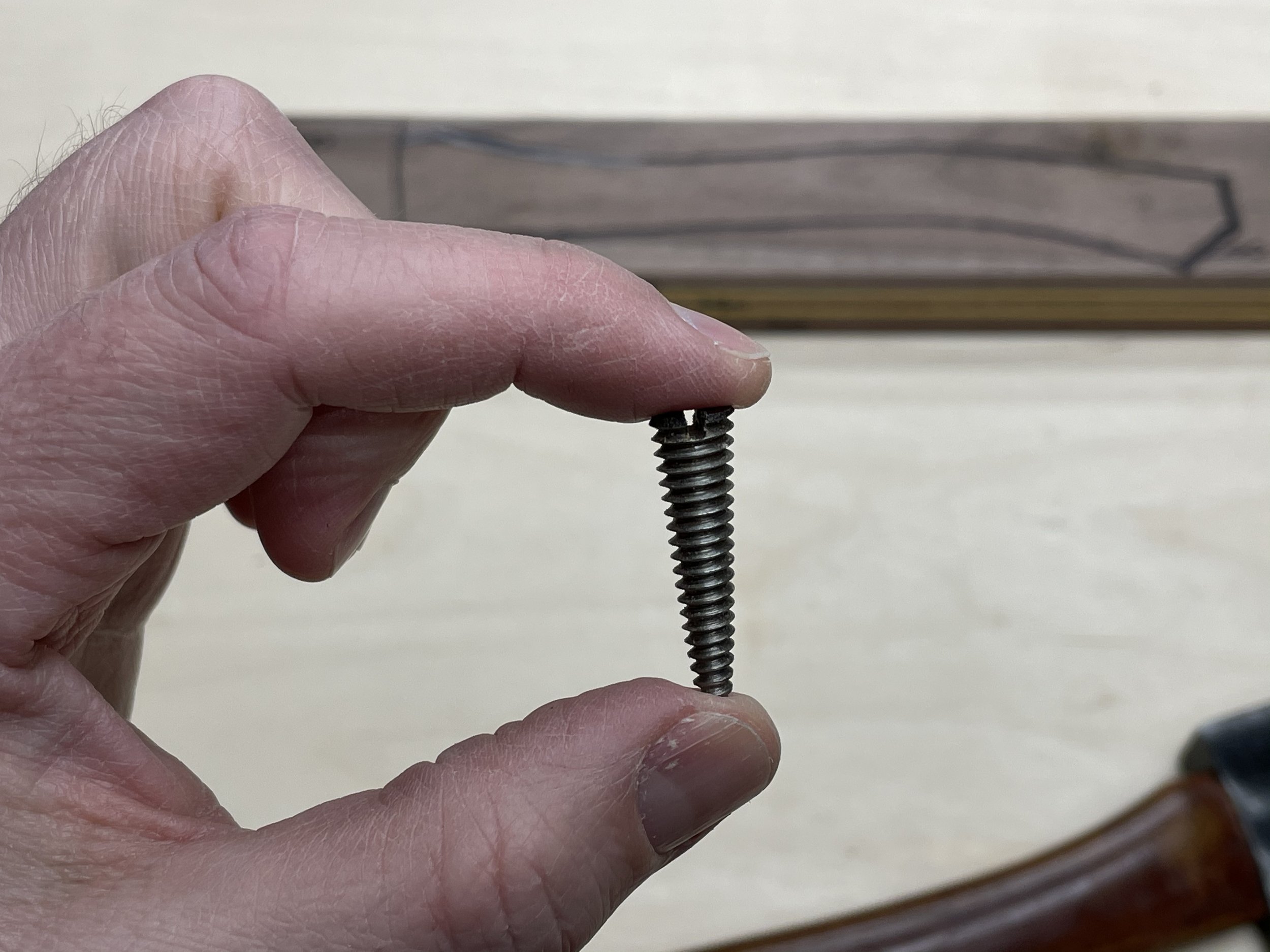
Removing the old hatchet head wasn't too hard. The original hatchet had a wedge shaped screw unlike any I had ever seen before. It was a cone shaped screw that was used to wedge the head on. It came out really easy so I don't think it was really doing anything to hold the head in place. After removing the screw I used a few old drill bits to drill down through the head and remove as much material as possible. Then a few taps with a mallet and the left over material was removed.
Step 5: Cut Wood Down to Size
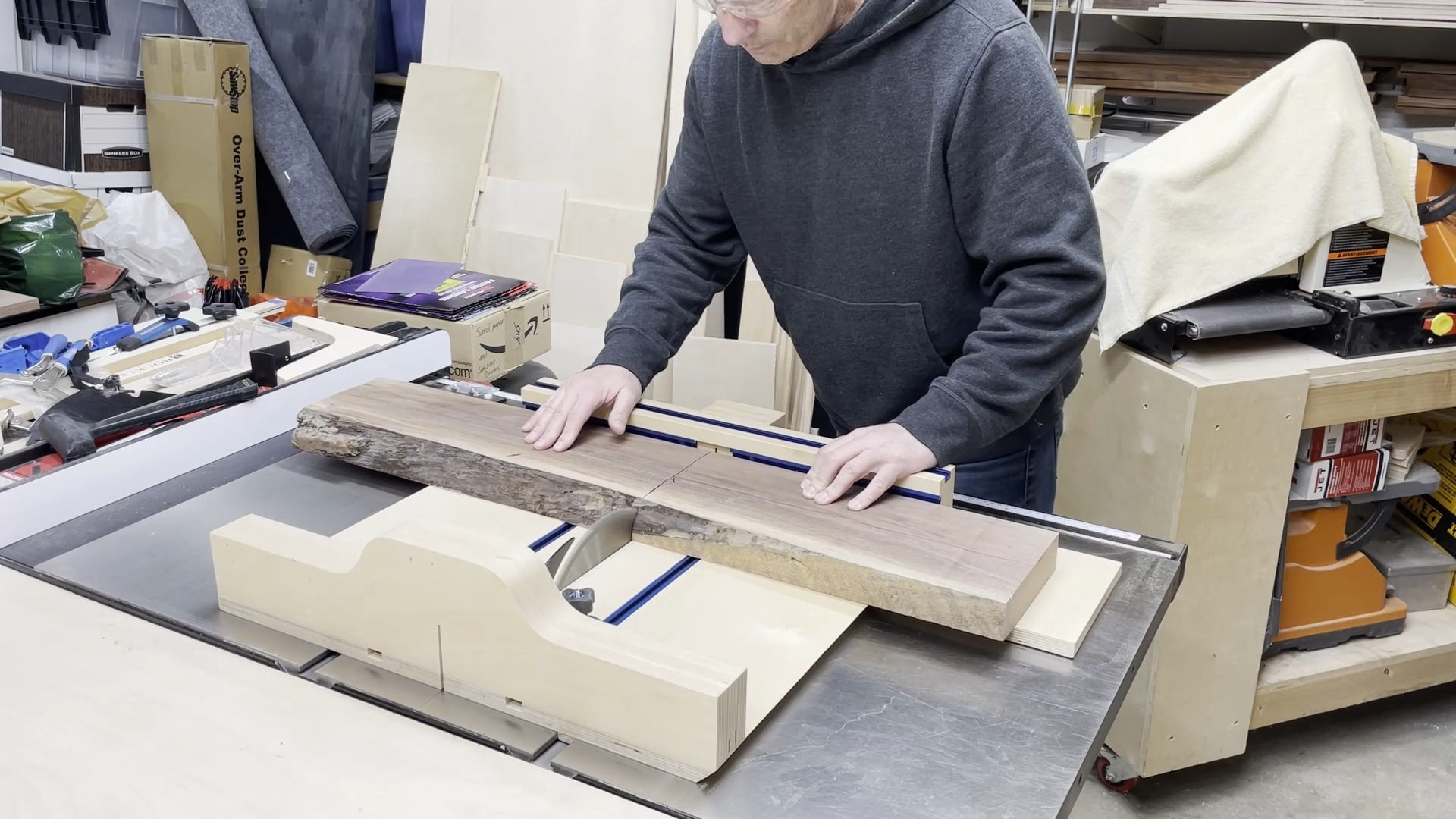
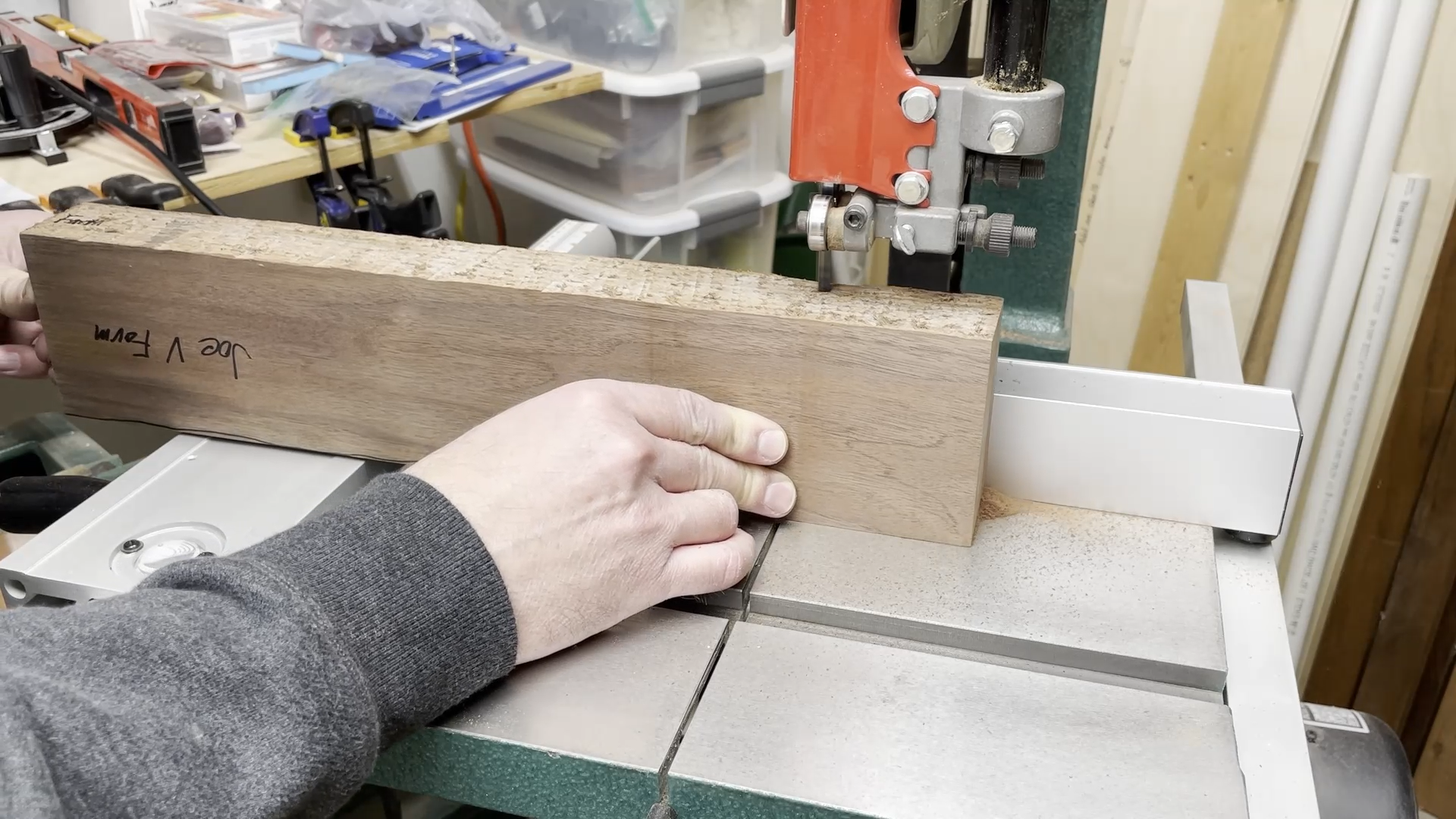
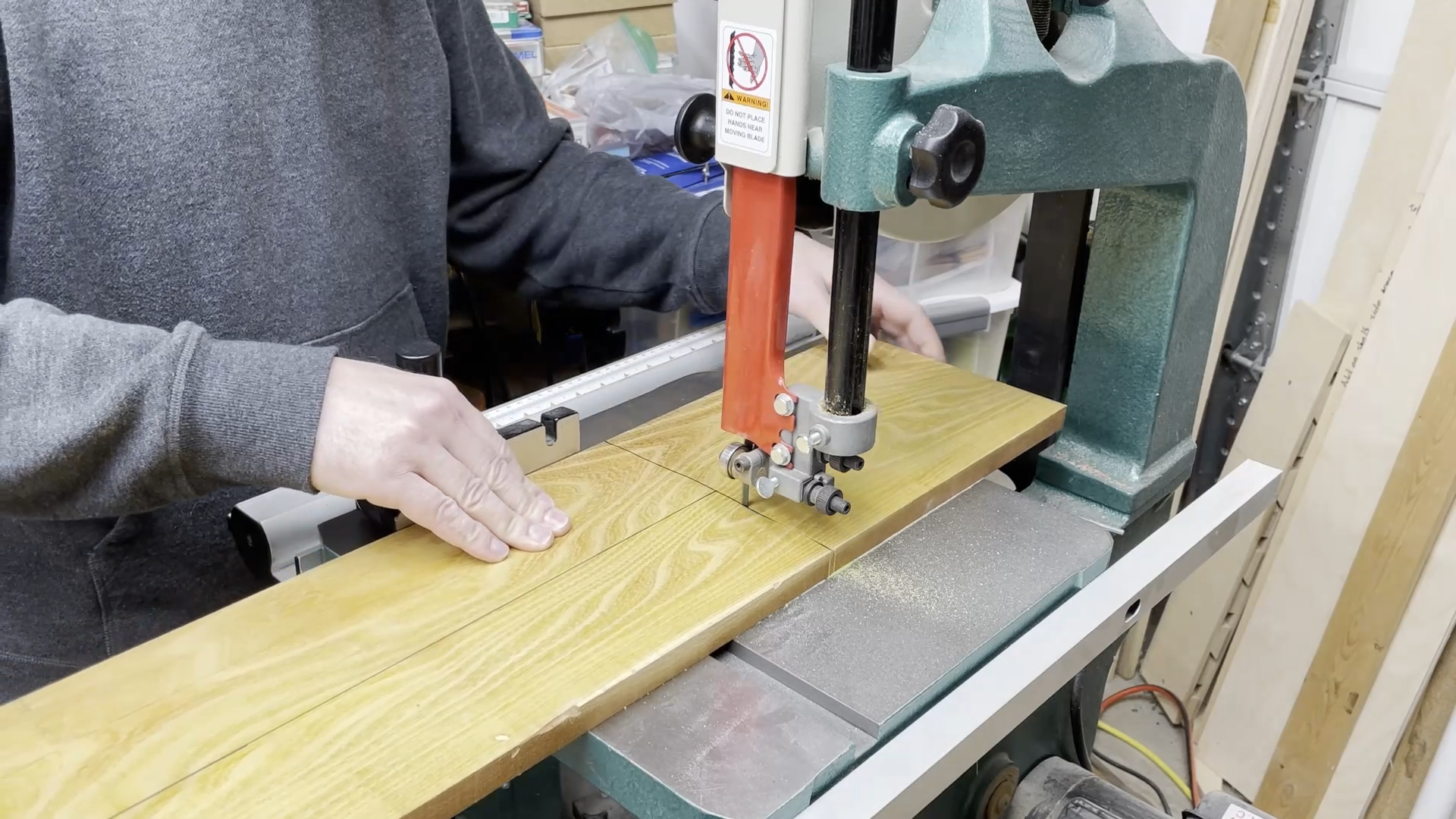

As you will see in the video and pictures, I had some sizeable pieces of wood that I used for this hatchet. I took my time and looked through the pieces of wood to determine the best location to take the handle shaped pieces from.
Once I cut the pieces to size I also had to cut it to the correct thickness. To get a nice uniform layer of wood I cut out a rectangular shape, then flattened one side of the piece of wood using a jointer. Next I ran these pieces through a planer to get the thickness close to what I wanted. Then, to dial in the thickness, I used a drum sander to sneak up on the desired thickness.
The whole time I was doing this I made sure to mark and keep track of what pieces of wood came from which family farm. I marked everything with marker and sometimes tape labels to keep track.
Step 6: Glue Layers of Handle Together
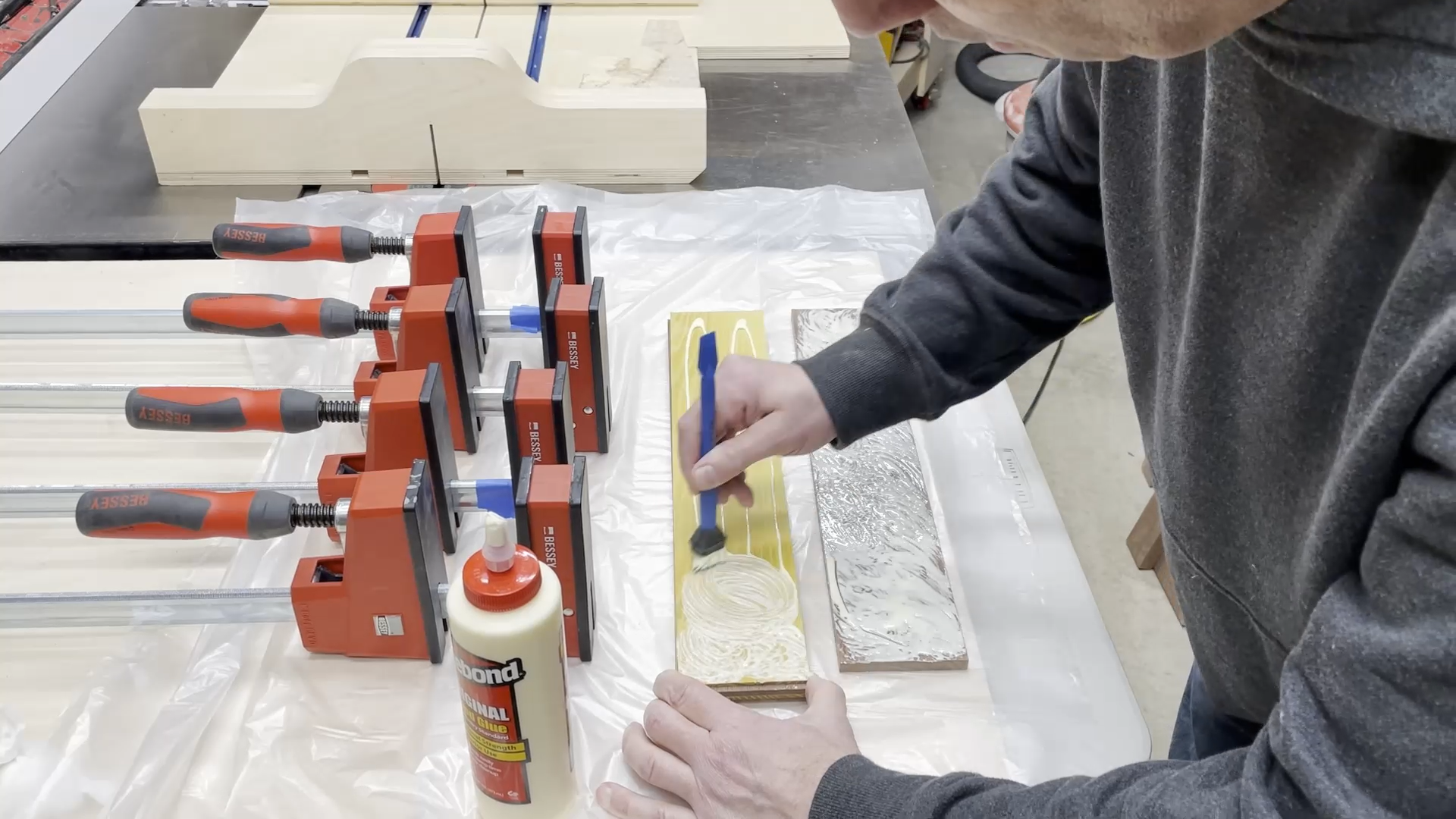
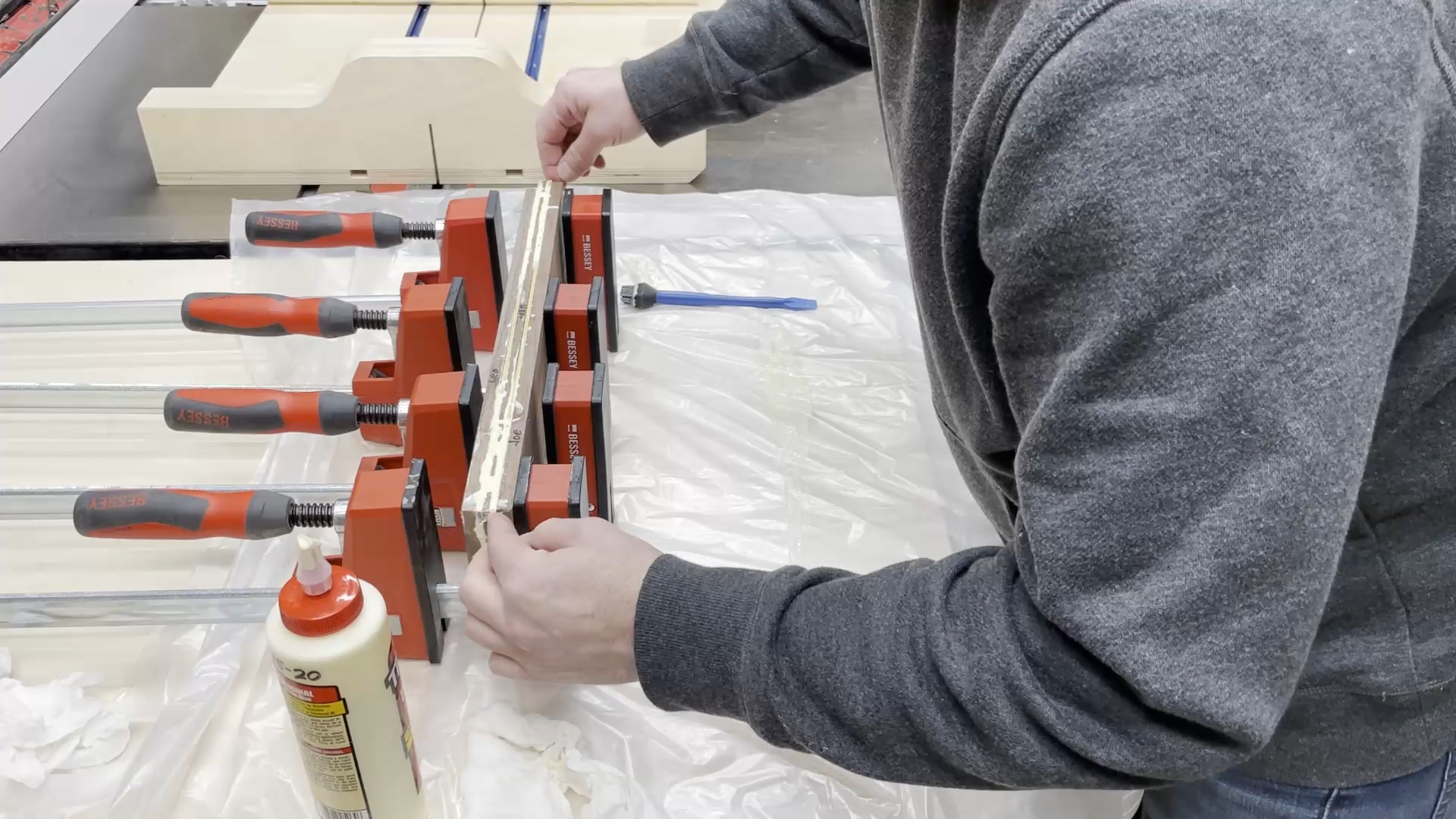
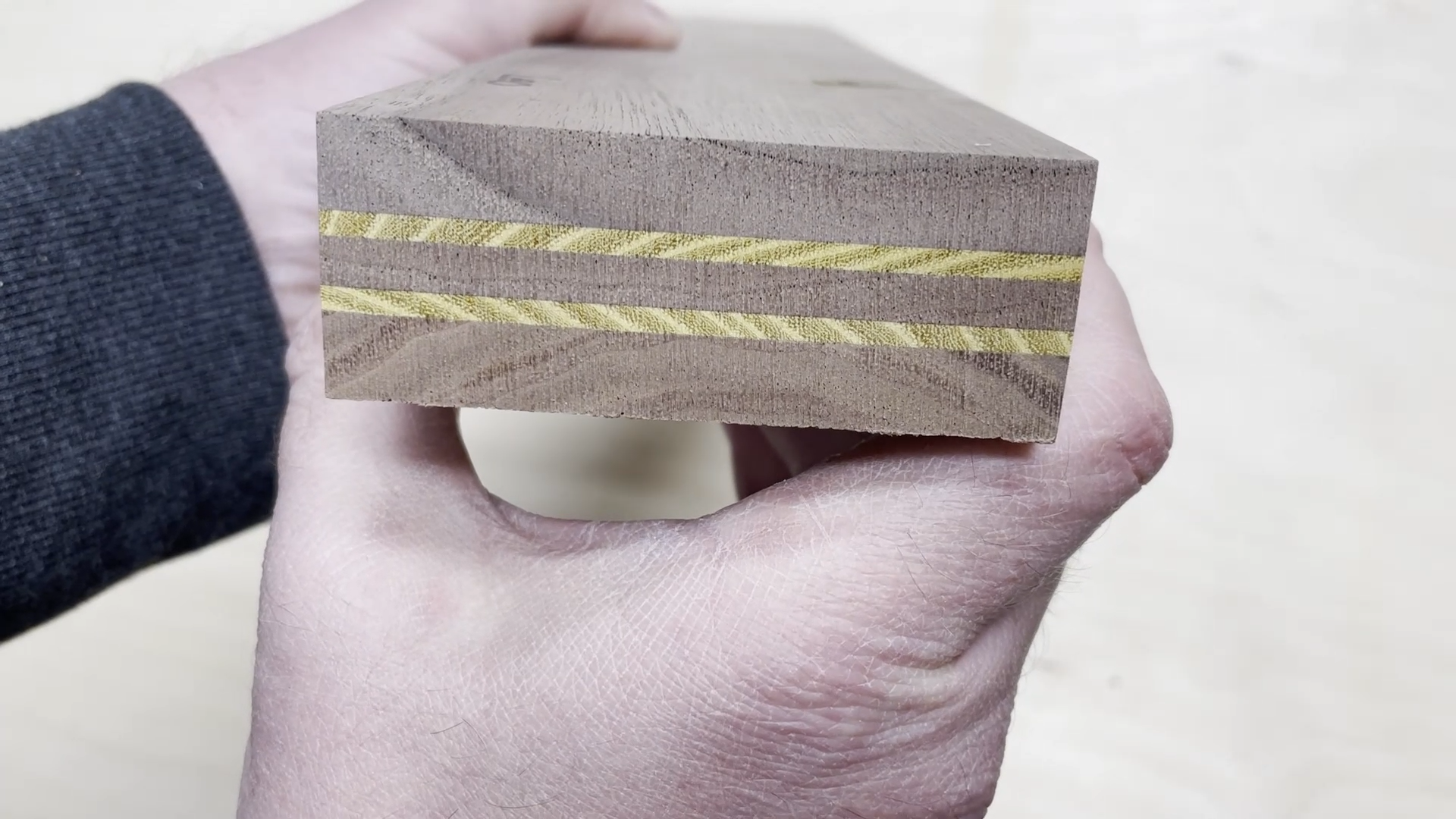
Gluing the handle pieces together was pretty easy since they were oversized by quite a bit. I layered everything up with a thick layer of glue and then put every clamp I could fit around the board.
I let the glue cure for a day before removing the clamps.
Step 7: Cut the Handle Outline
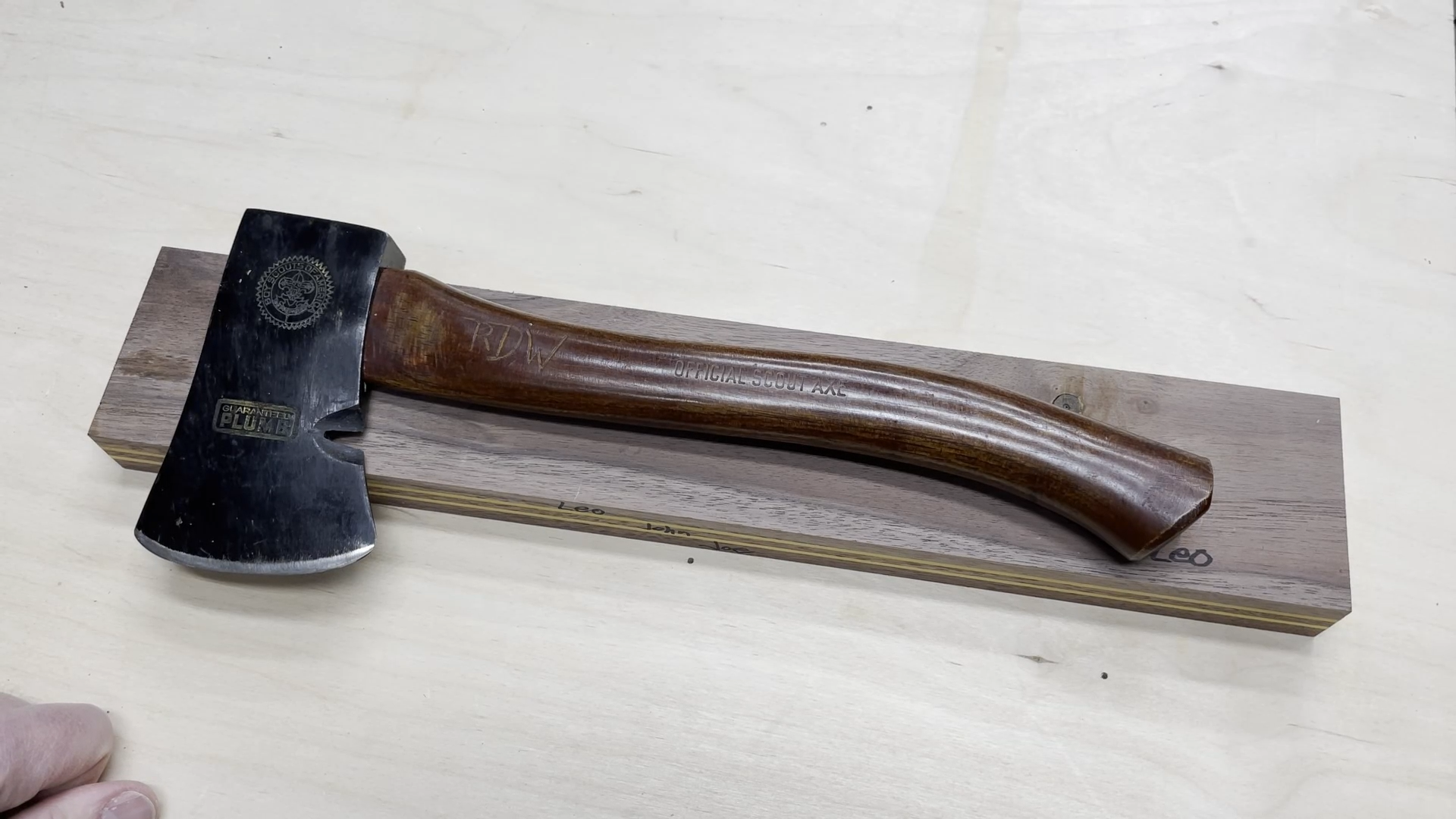
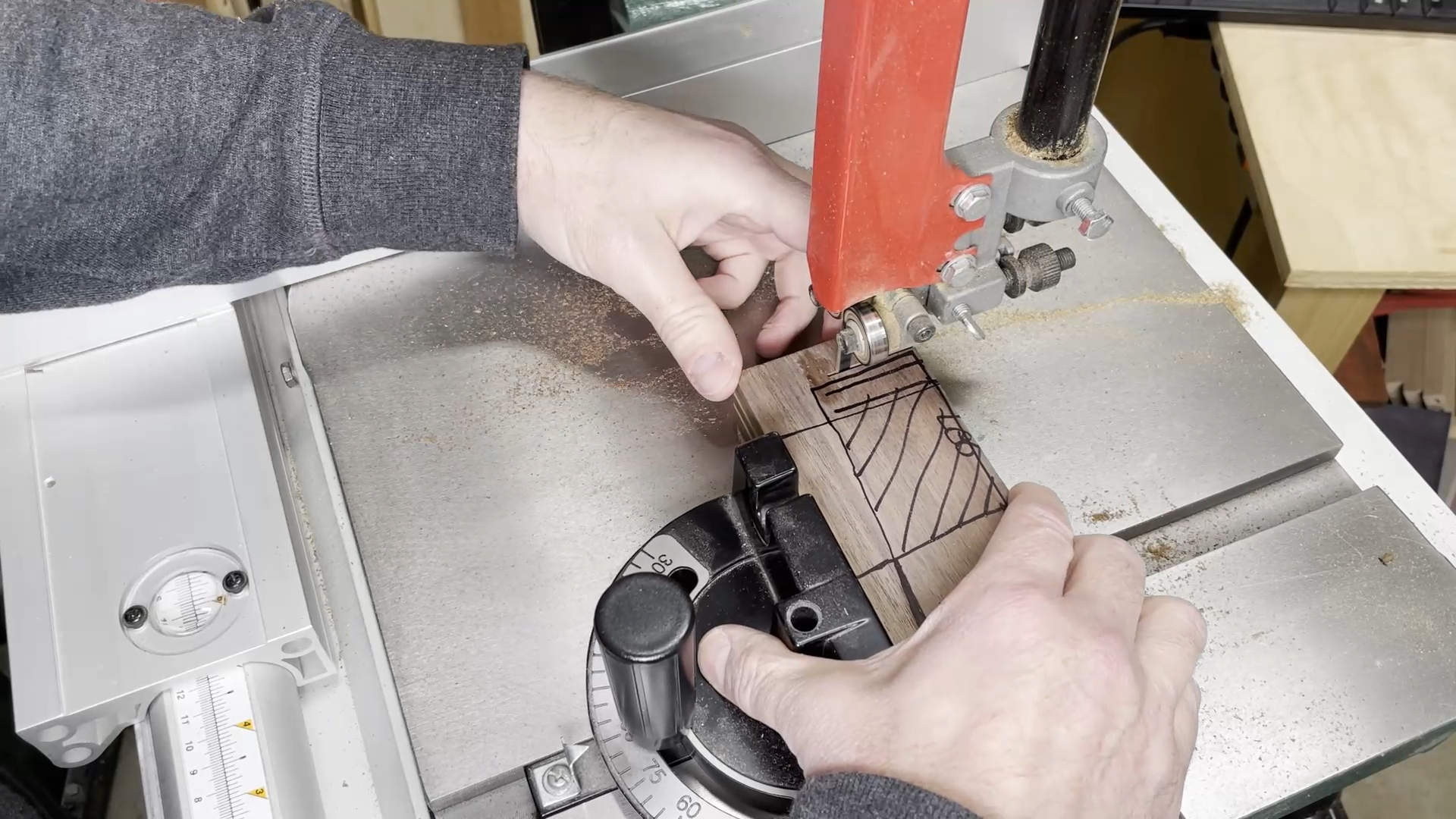
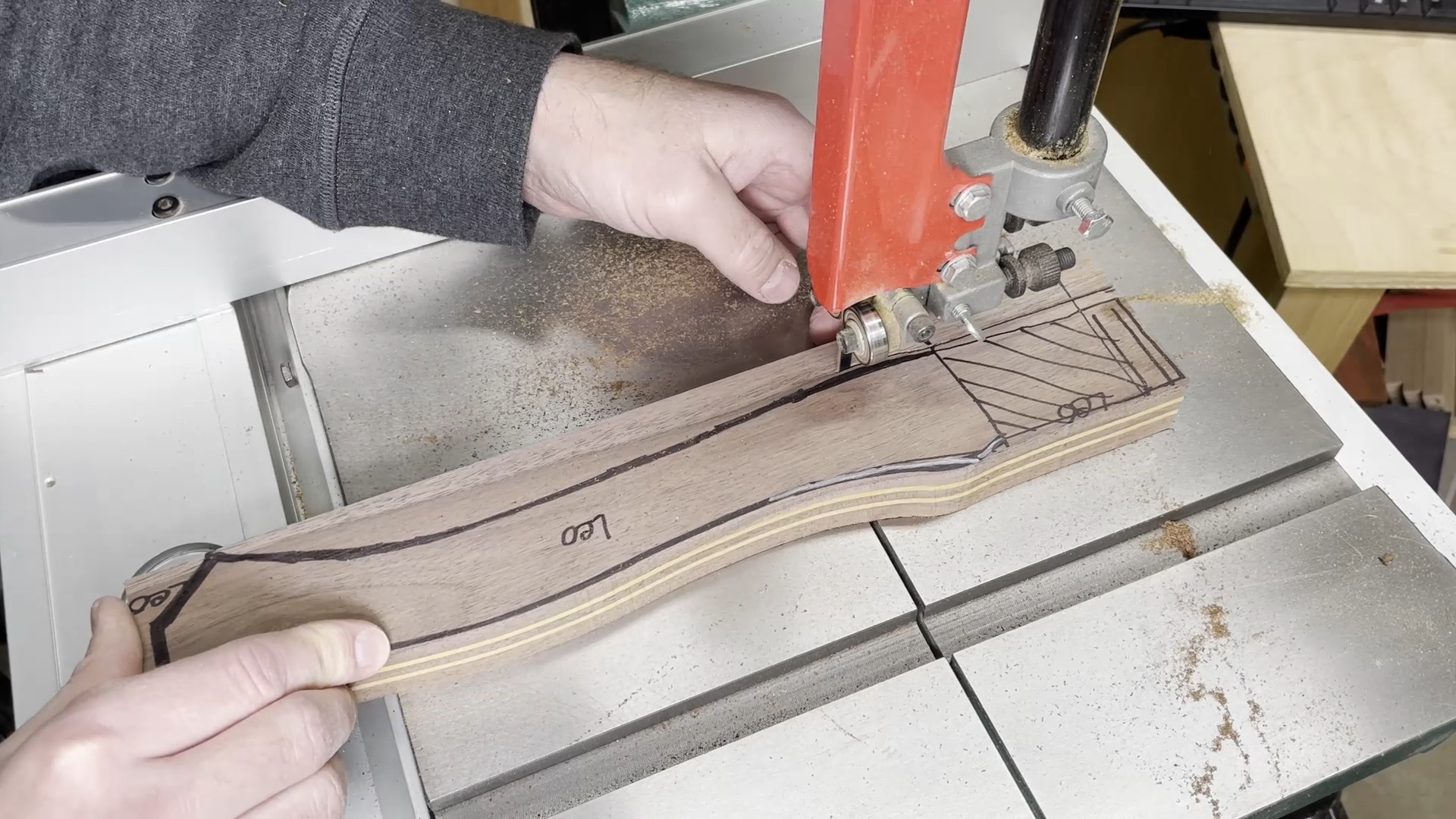
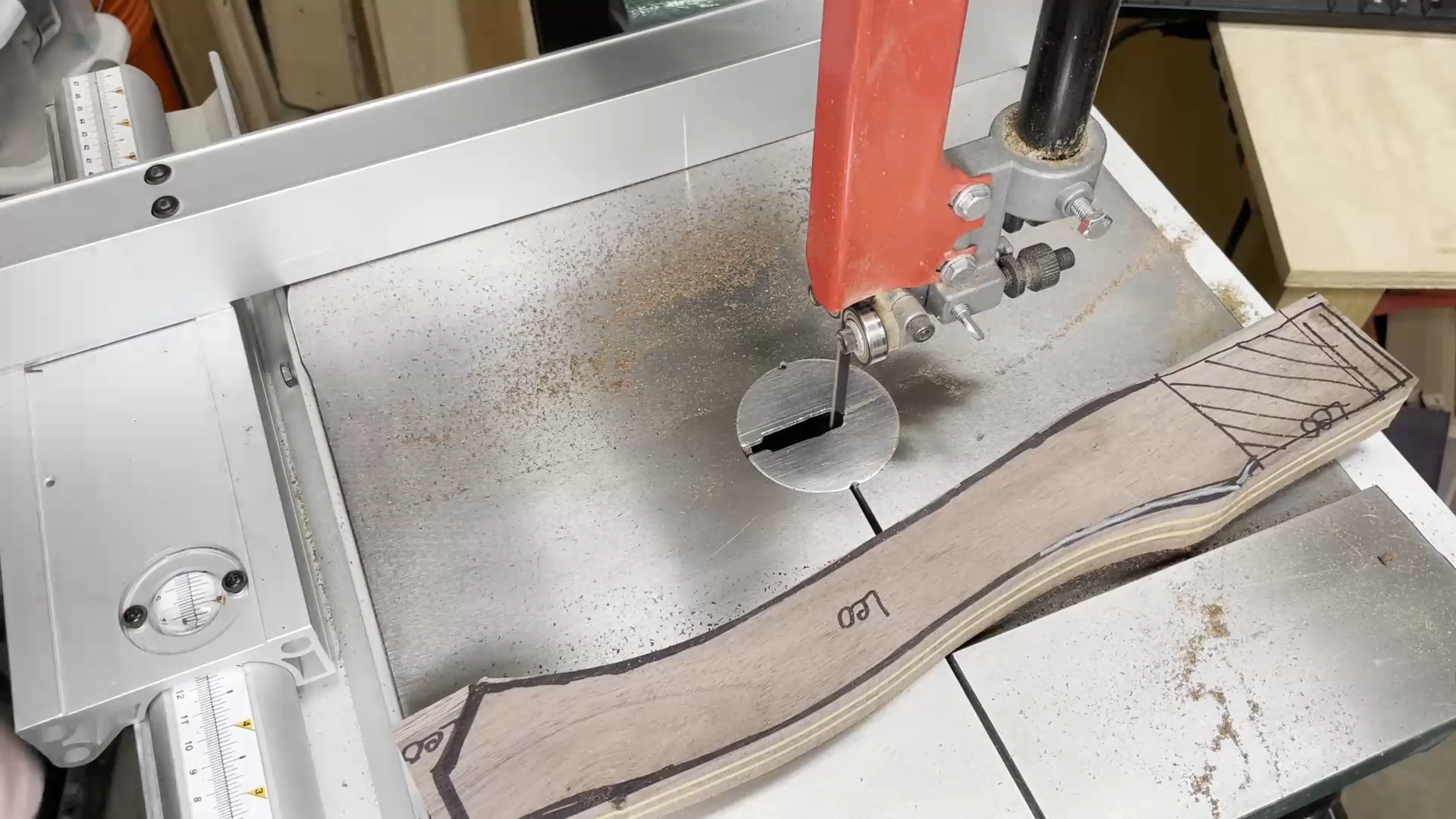
I used the old handle as a pattern to lay out the new handle shape. I thickened it up in several areas compared to the old handle and then cut out the rough shape on the bandsaw. The new handle had a little more curvature to it in places and I really like the subtle differences.
Step 8: Cut the Outline of the Hatchet Head Opening
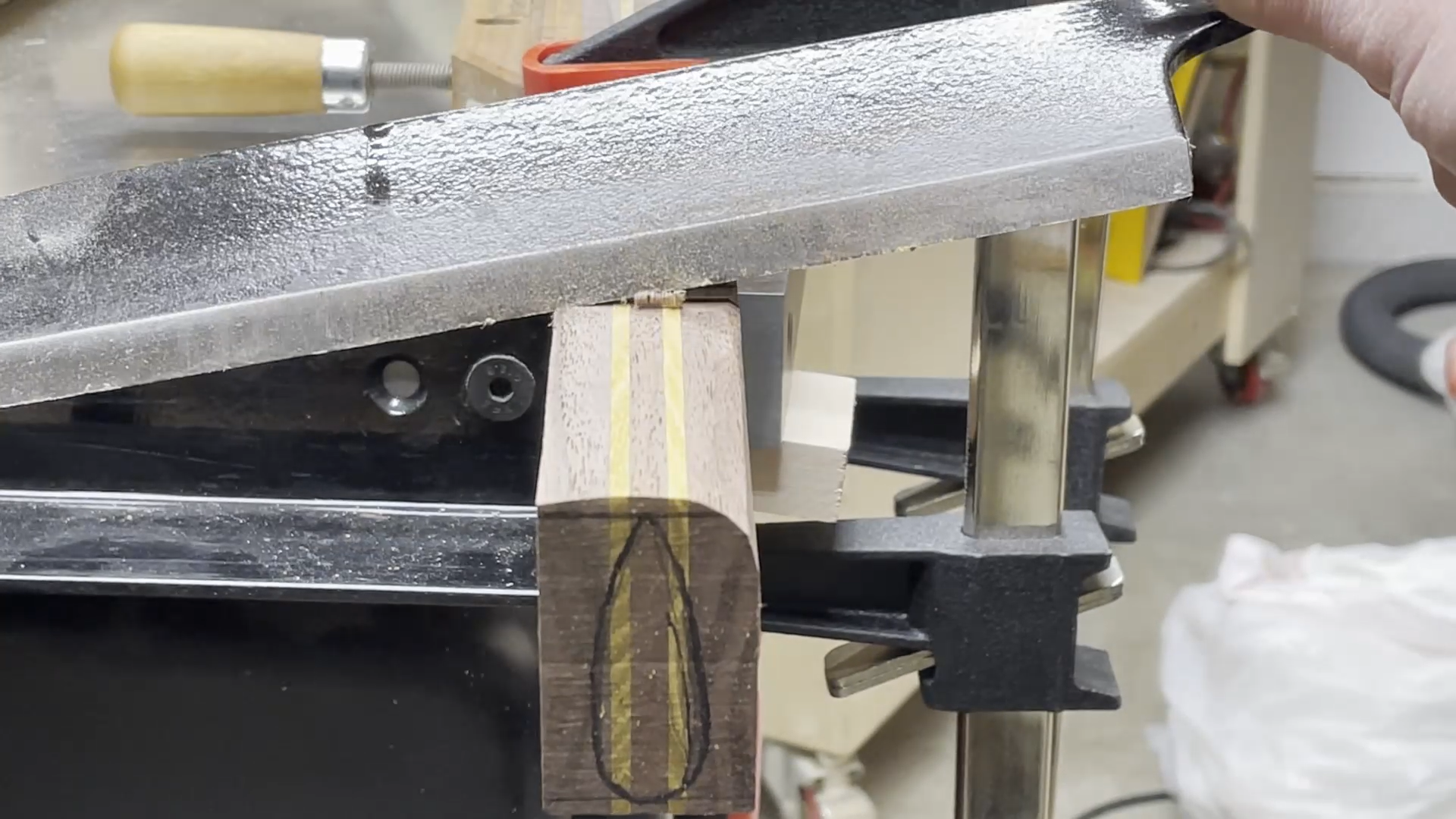
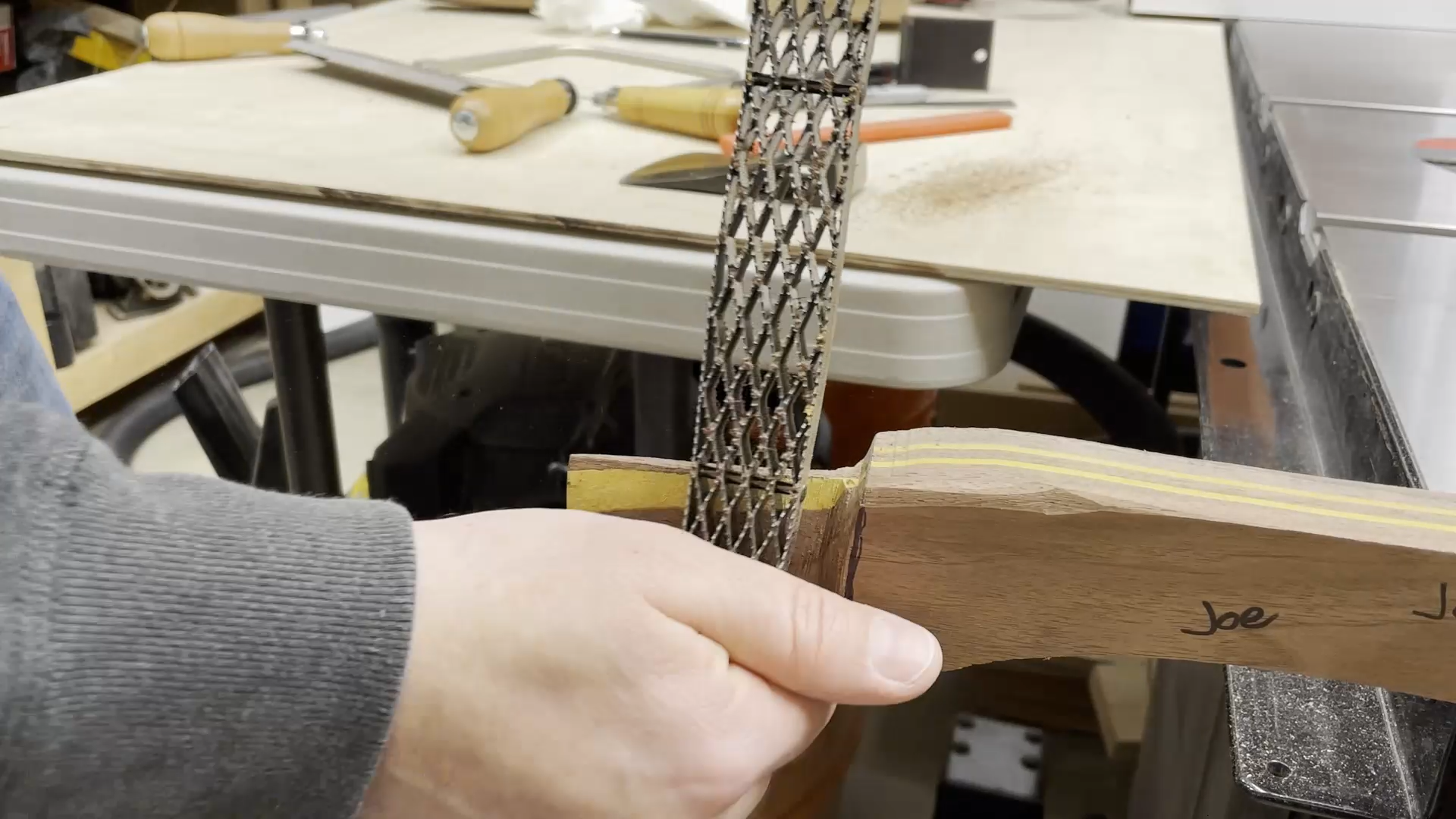
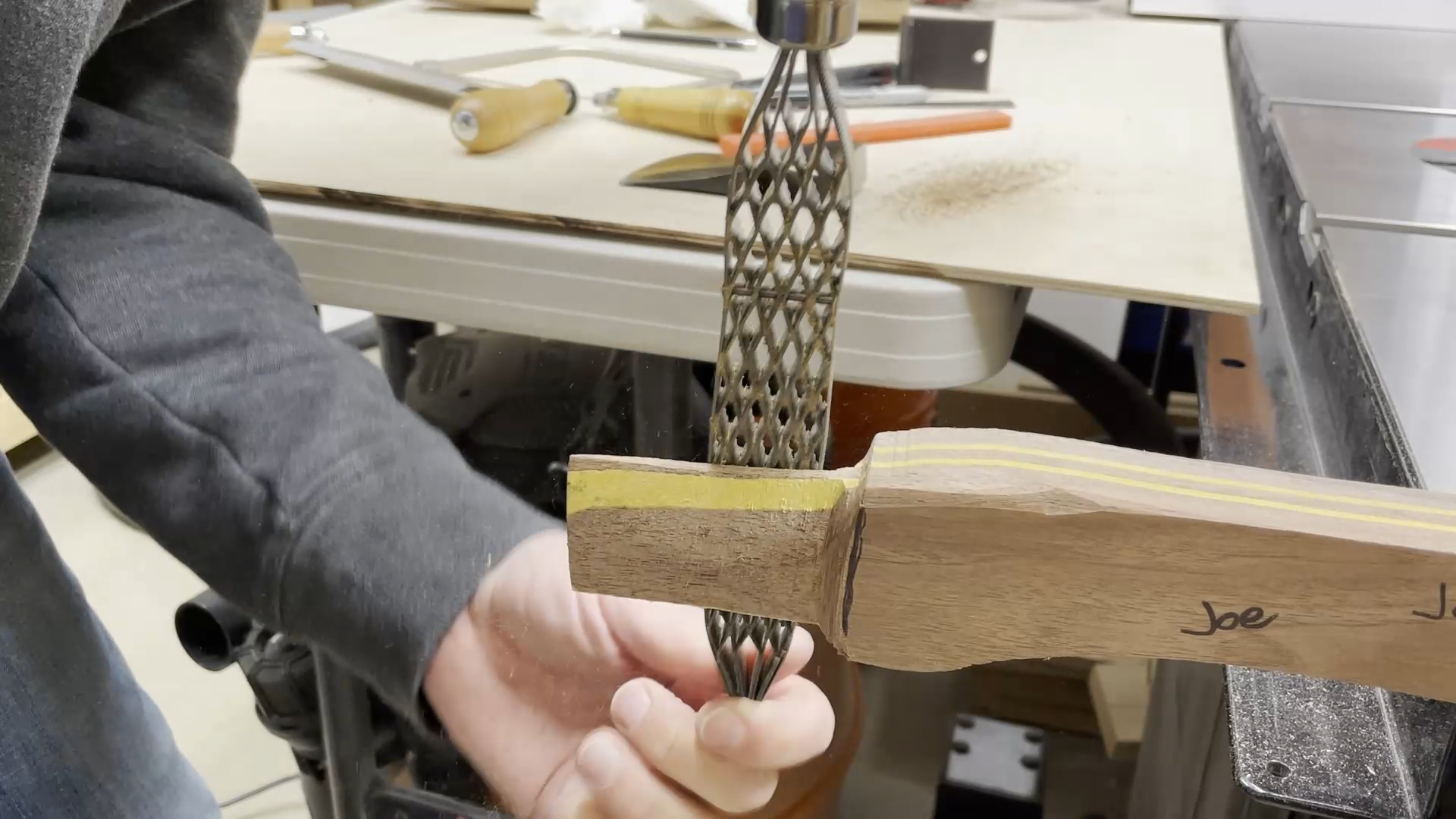

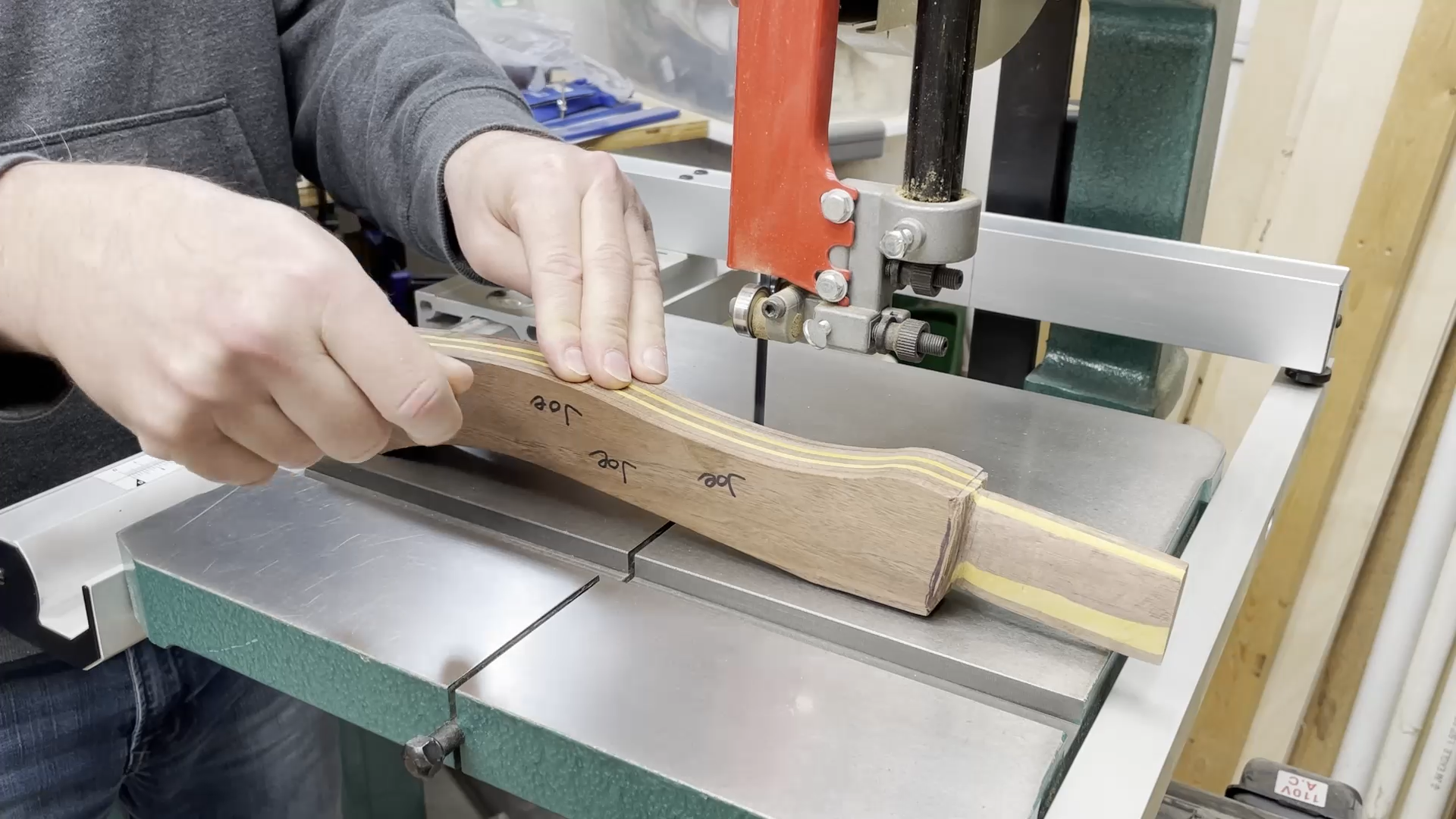
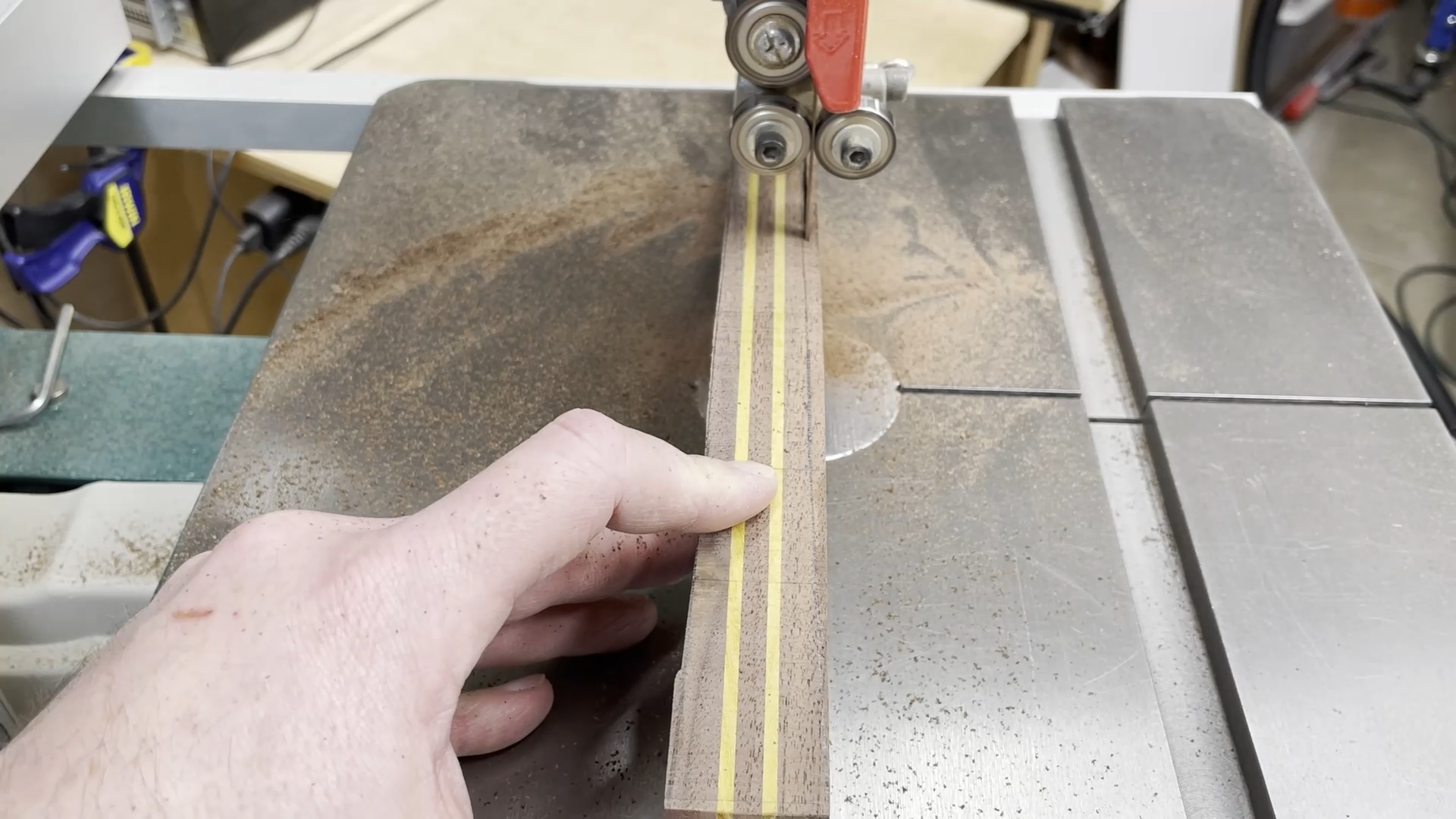
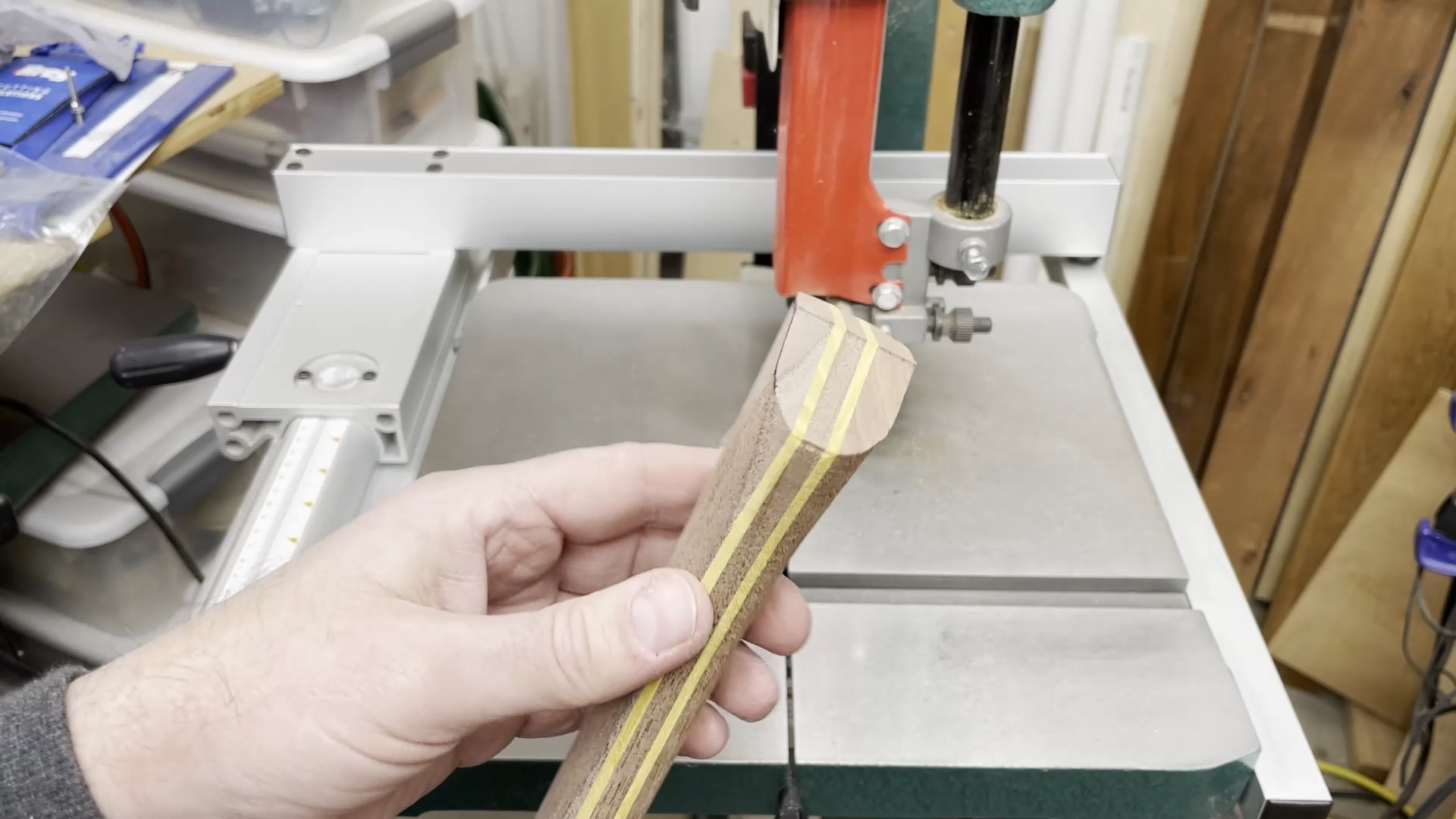
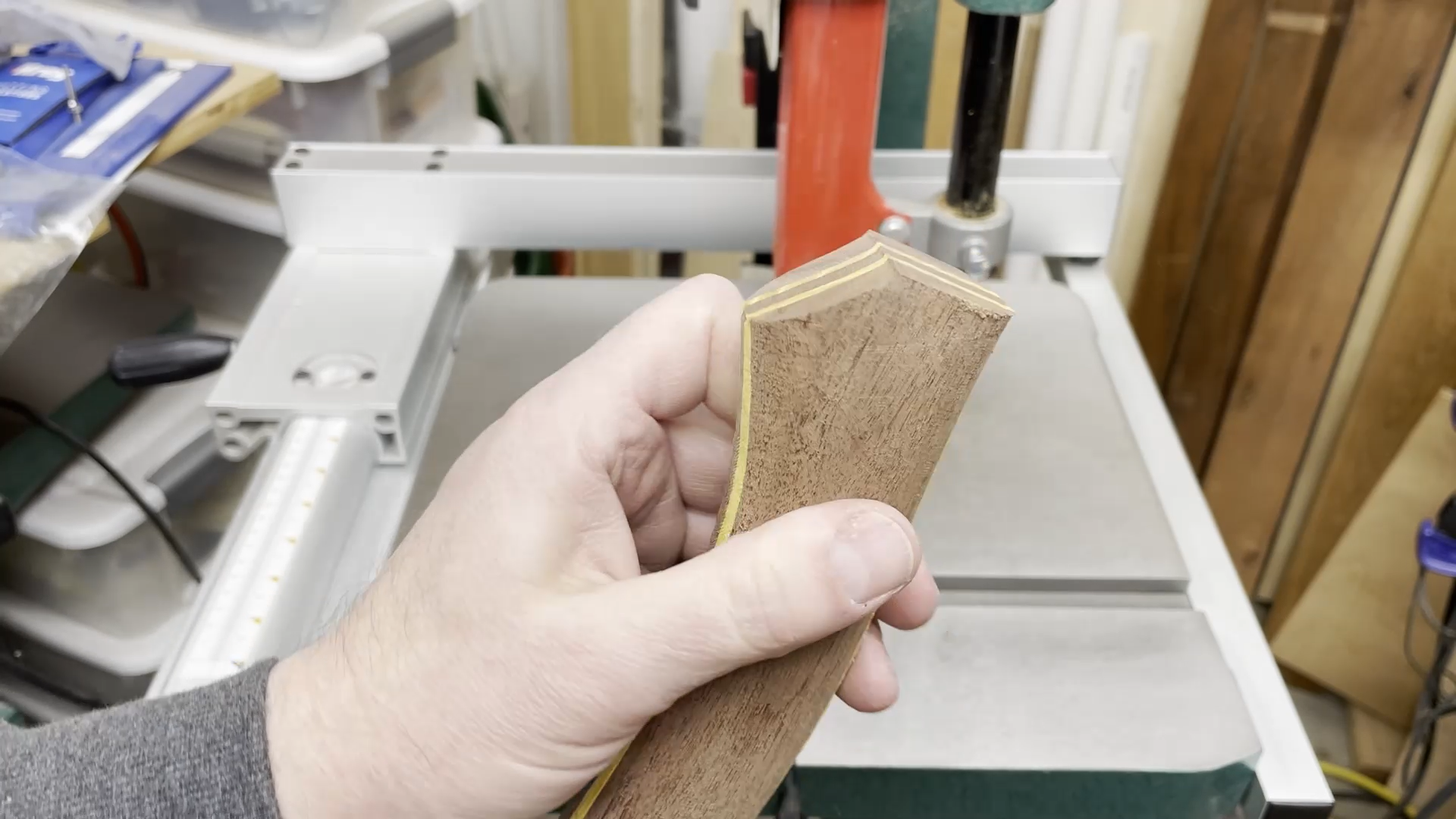
I used the bandsaw to rough cut the handle for the area where it would go through the hatchet head.
Next I used a Shinto rasp to rough out the exact shape of the handle where is would fit in the head. I started out using a draw knife, but the walnut was much more brittle than I expected and I didn't want to chip out a big section.
The shinto rasp works incredibly well for shaping wood and this handle was no exception. I highly recommend you check this tool out if you are at all interested.
Step 9: Cut Wedge Openings in Handle Top
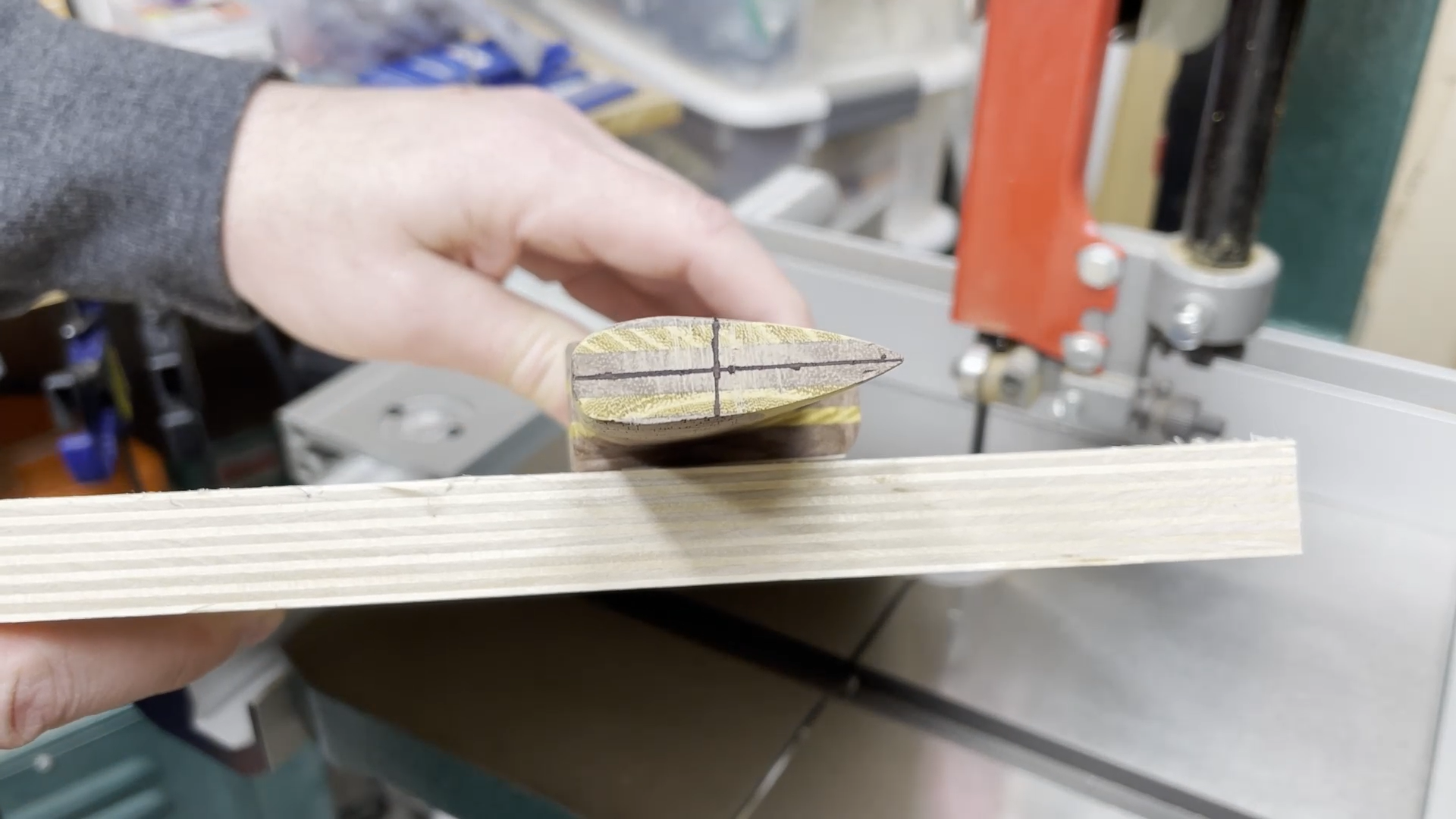
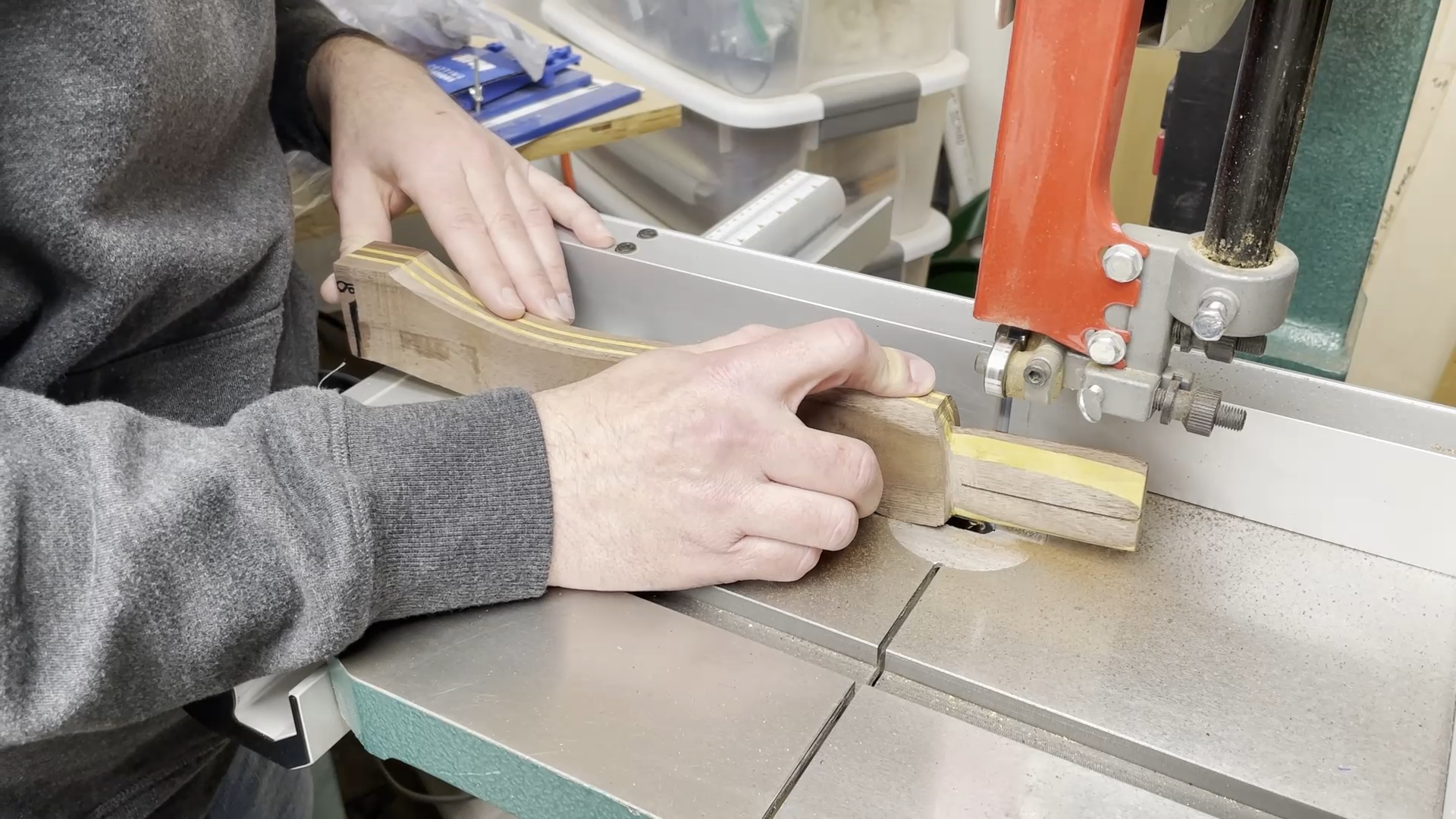
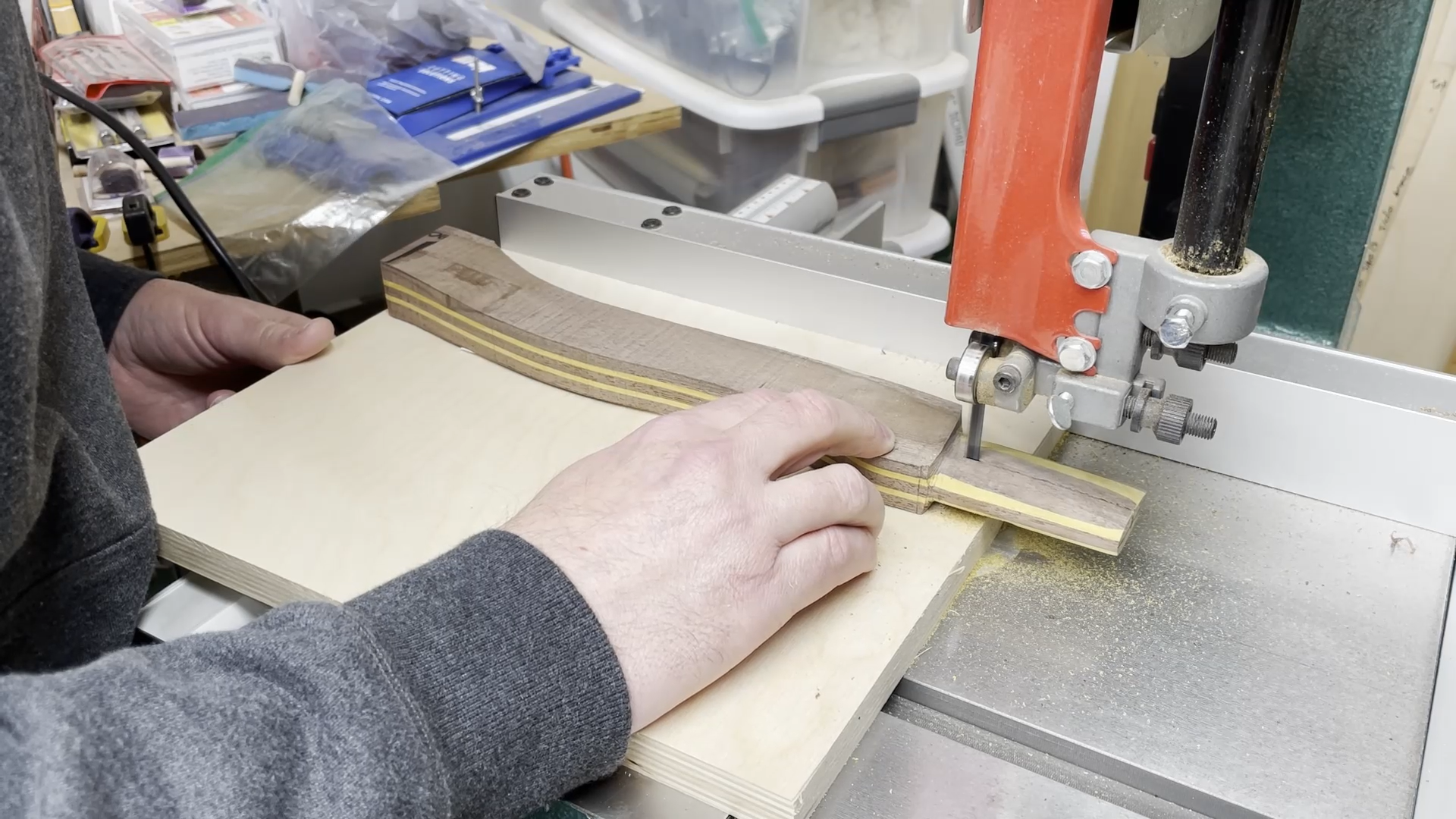
After getting the handle to the point where it would fit down into the hatchet head I used my bandsaw to cut a cross pattern in the top of the handle. These slots are for the wedges that would hold on the hatchet head.
I made these cuts while the faces of the handle were fairly flat so it would not be hard to keep the cuts straight.
Step 10: Make the Wedges and Glue Them in Place
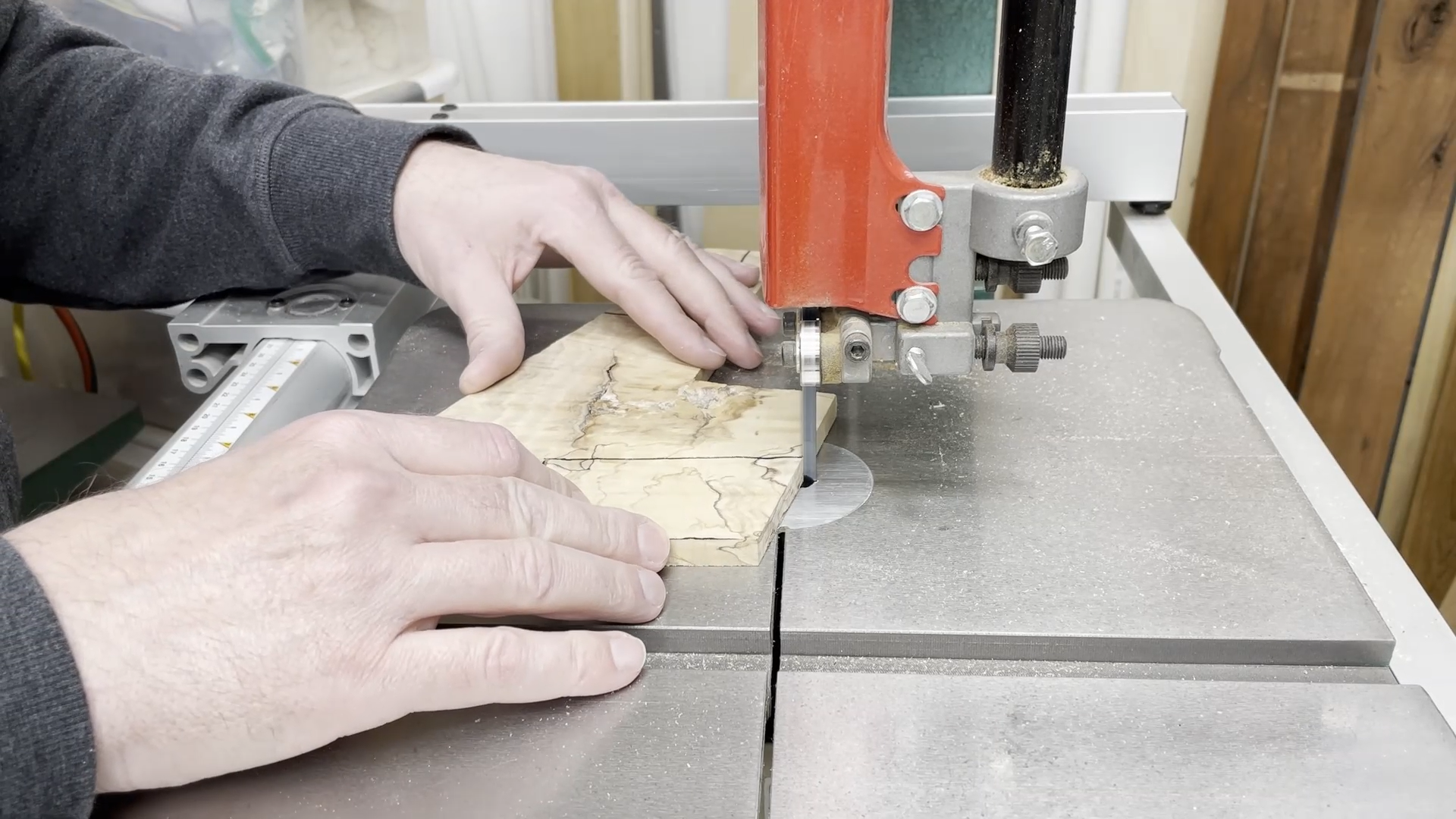
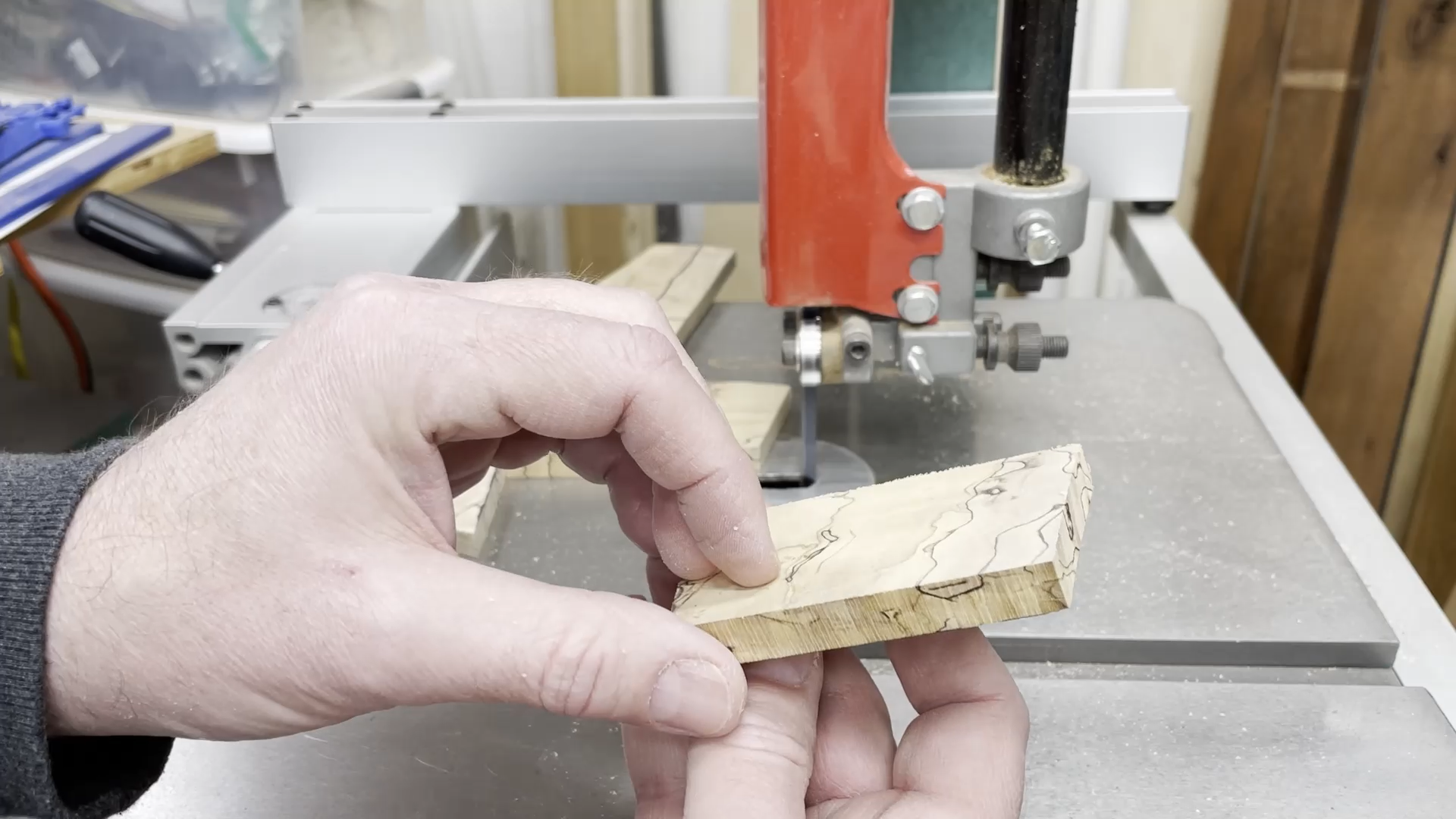
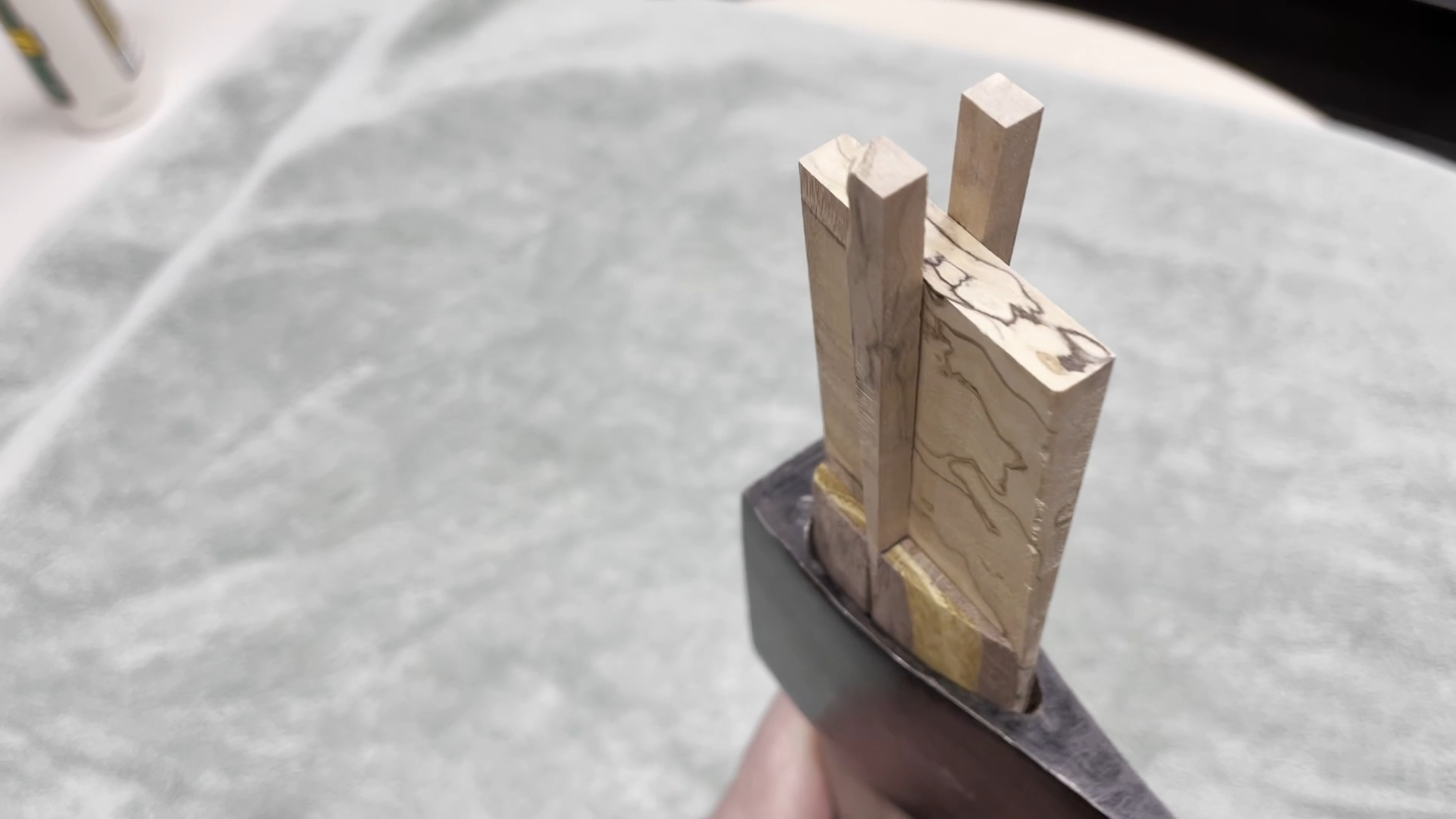
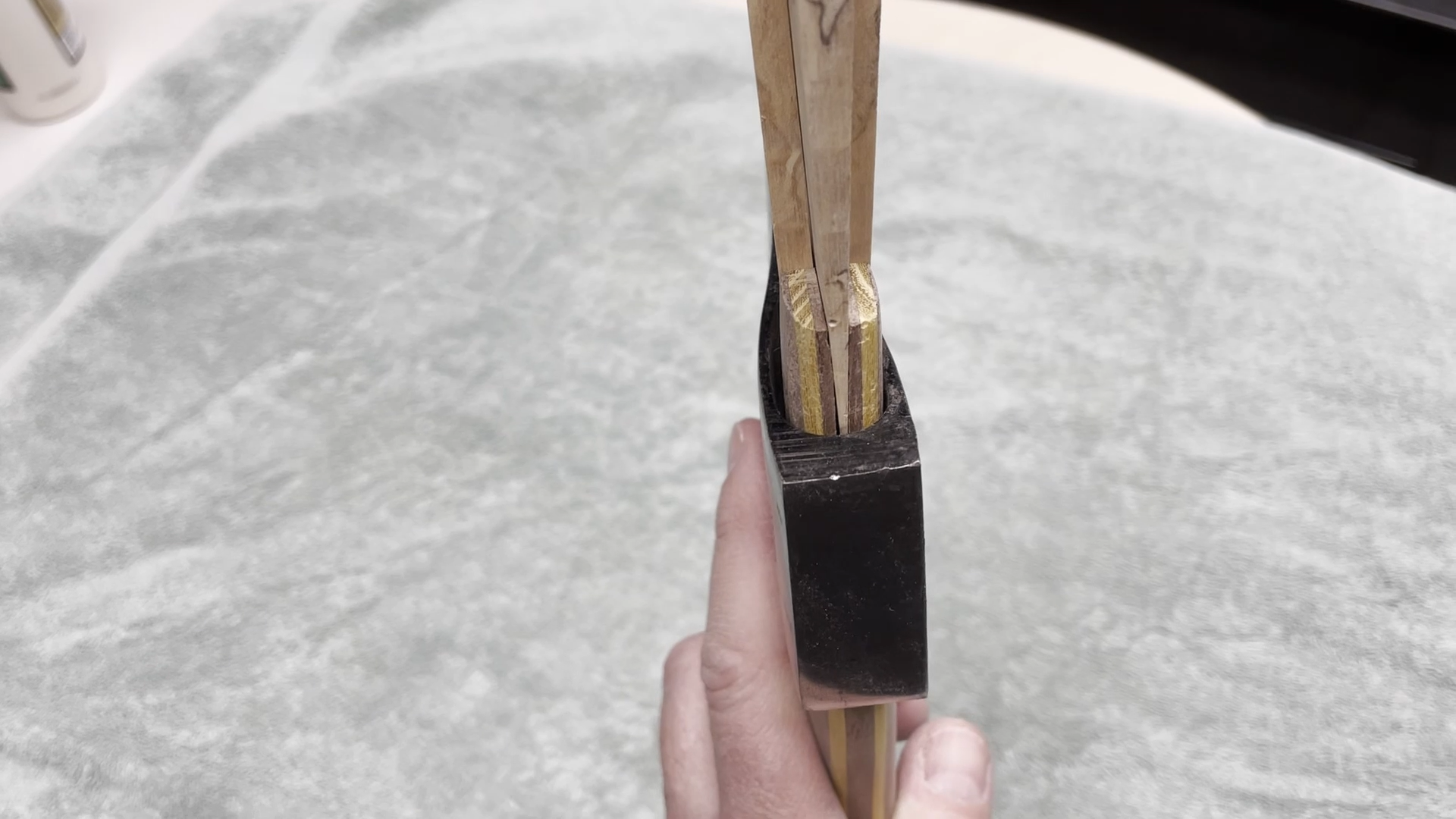
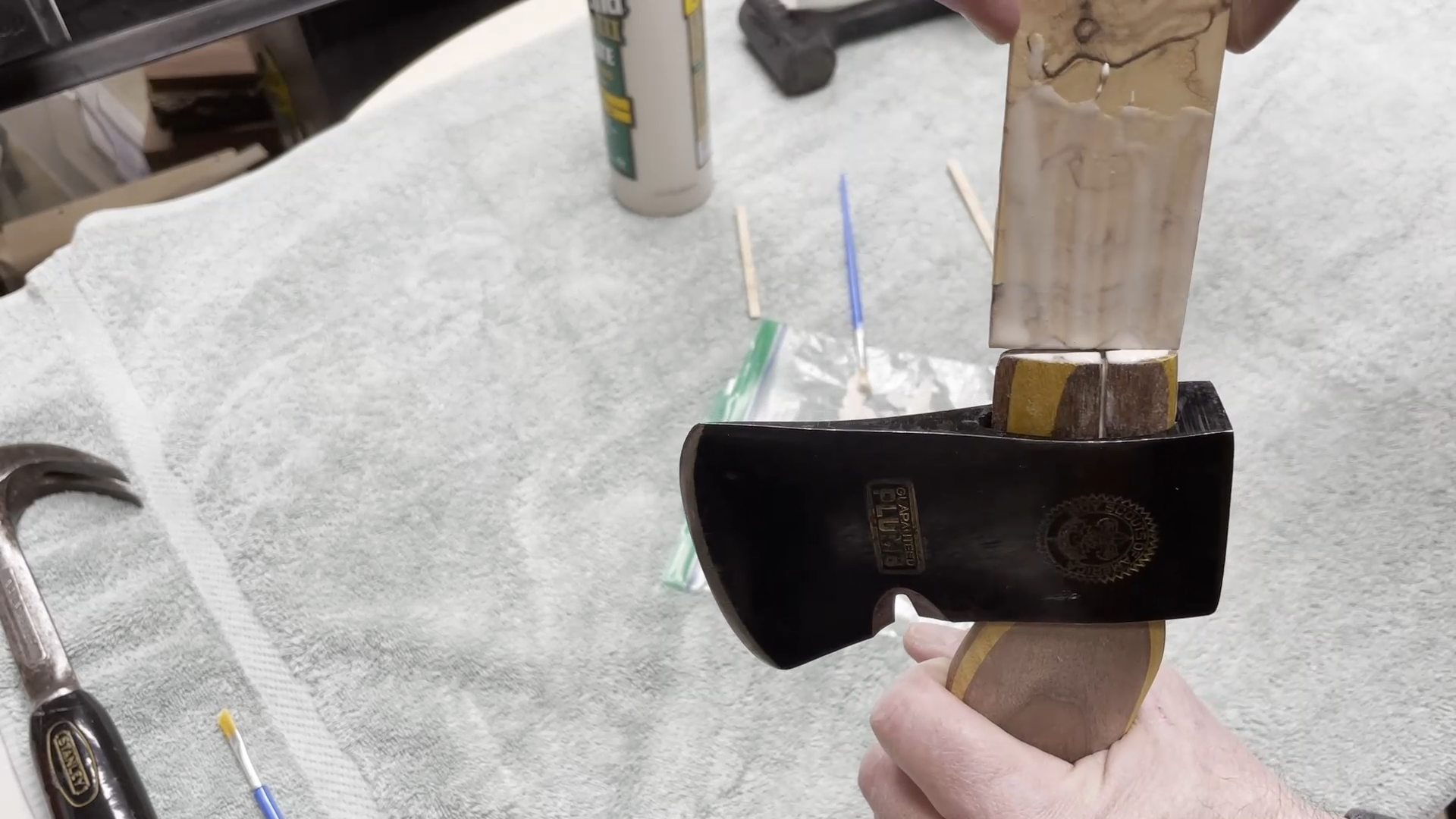
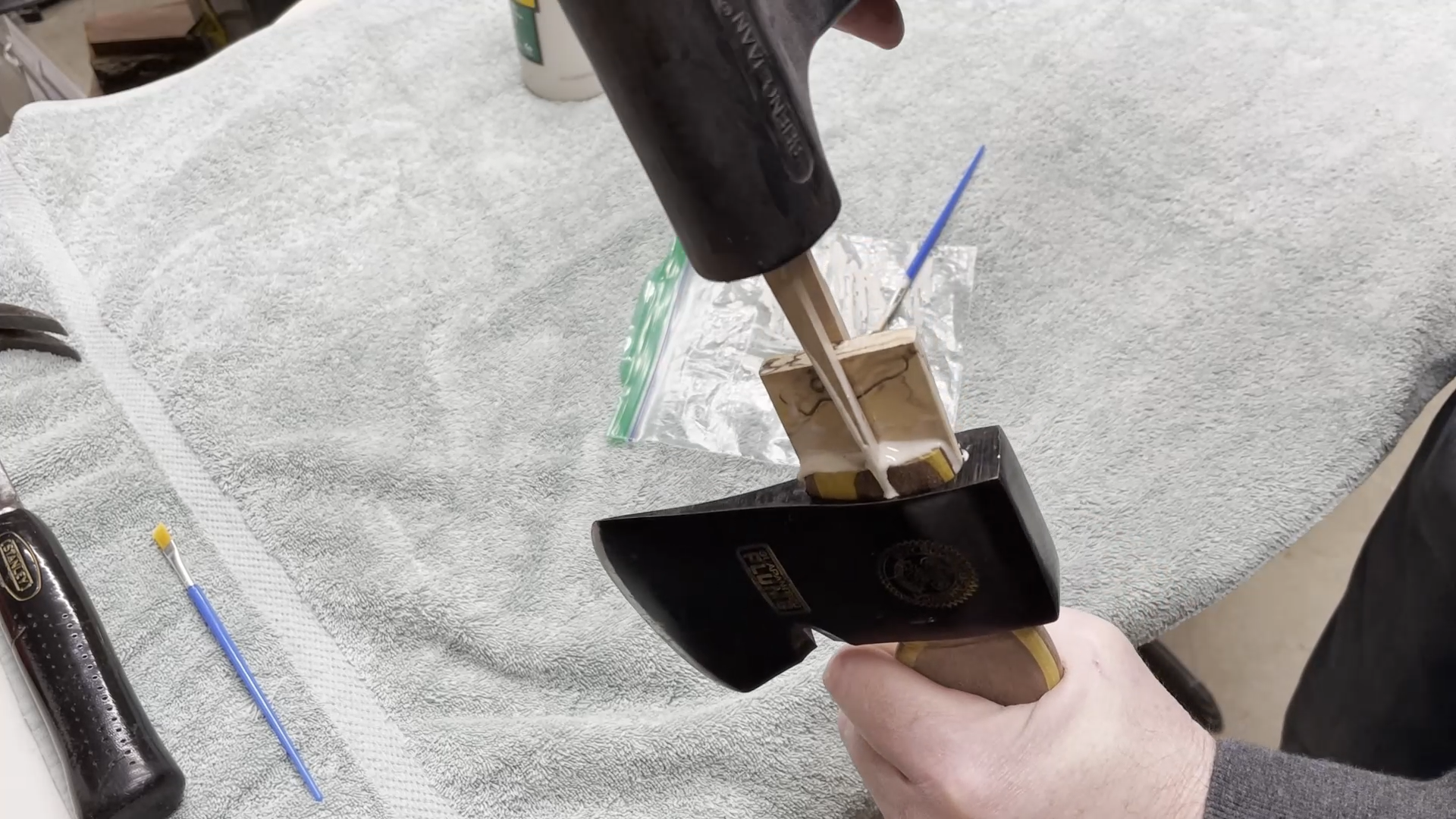

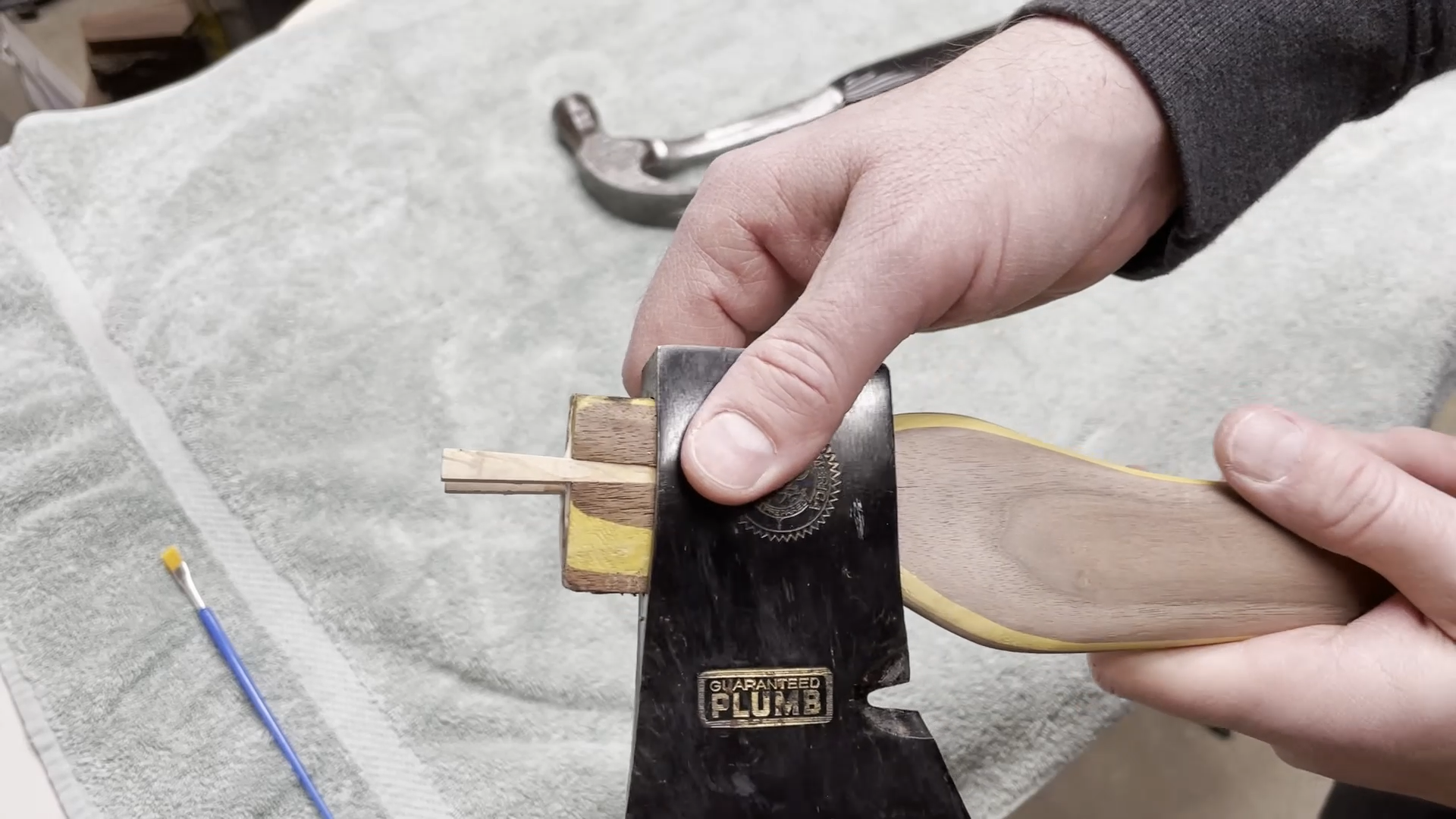
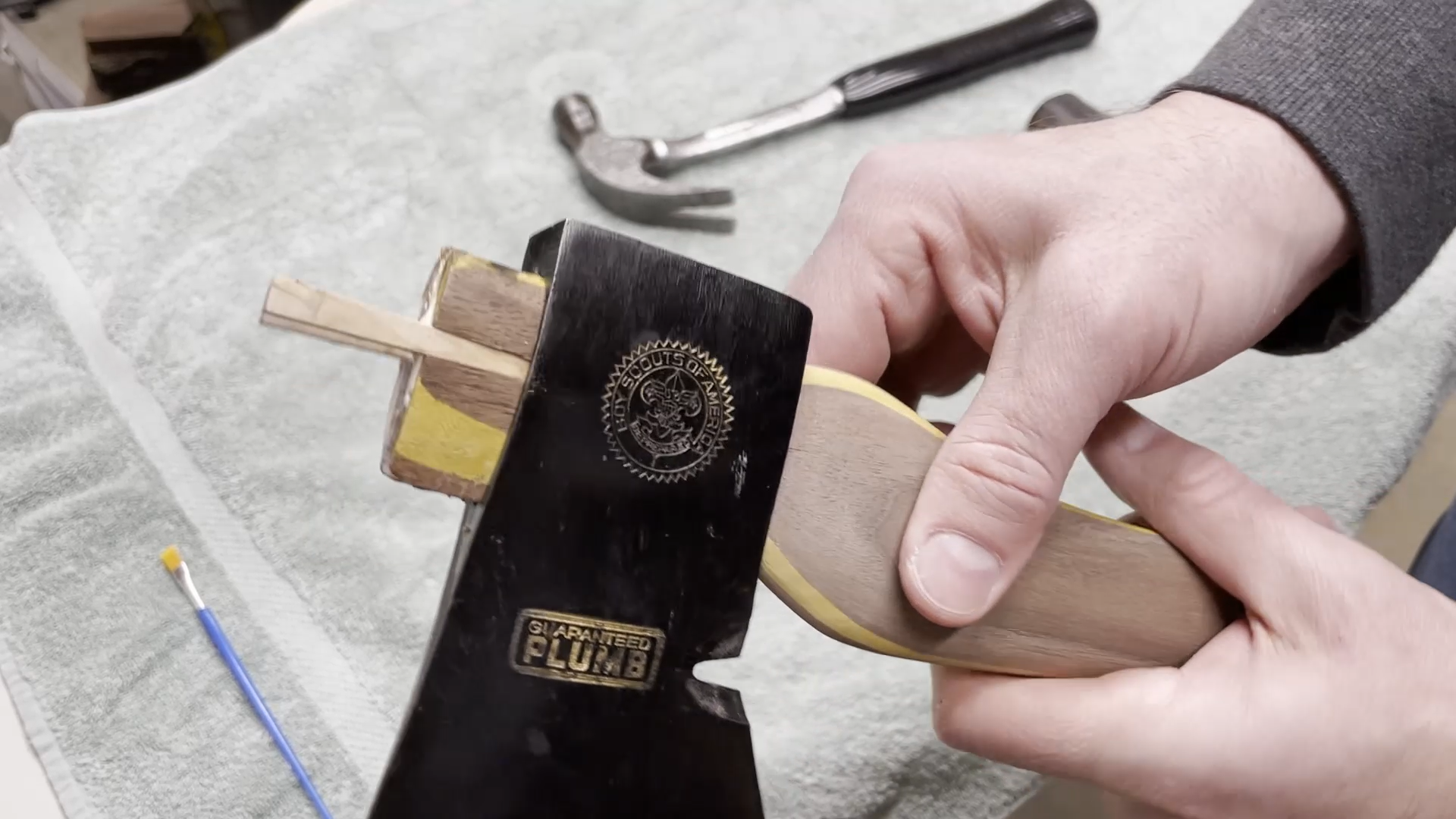
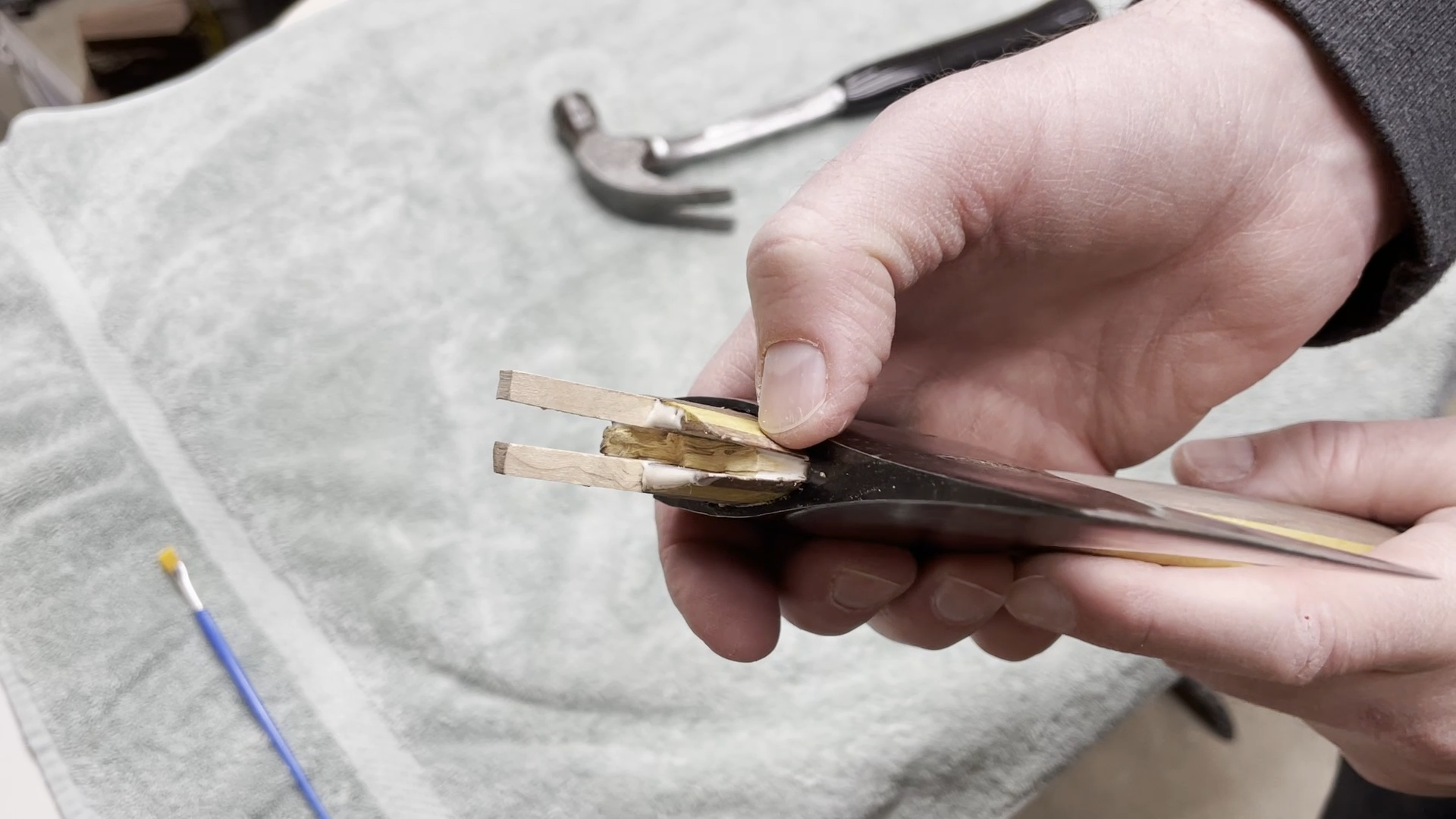
The next step in getting this hatchet put together was to make the wedges for the head and using them to set the head. I cut the wedges from a single piece of spalted maple that was from the tree in my parents front yard. I drew the rough rectangular shape of the wedge and then cut it out using my bandsaw. Next I
I followed the same process for the smaller side wedges. Once I had the shape I wanted I cut the wedge to what I thought was the proper width.
Gluing the wedges in place was nerve racking. This is the point where I thought I could really mess things up. I put a bunch of glue down into the slices in the handle and then lathered up the wedges before tapping them in place.
Step 11: Trim Wedges and Final Sanding

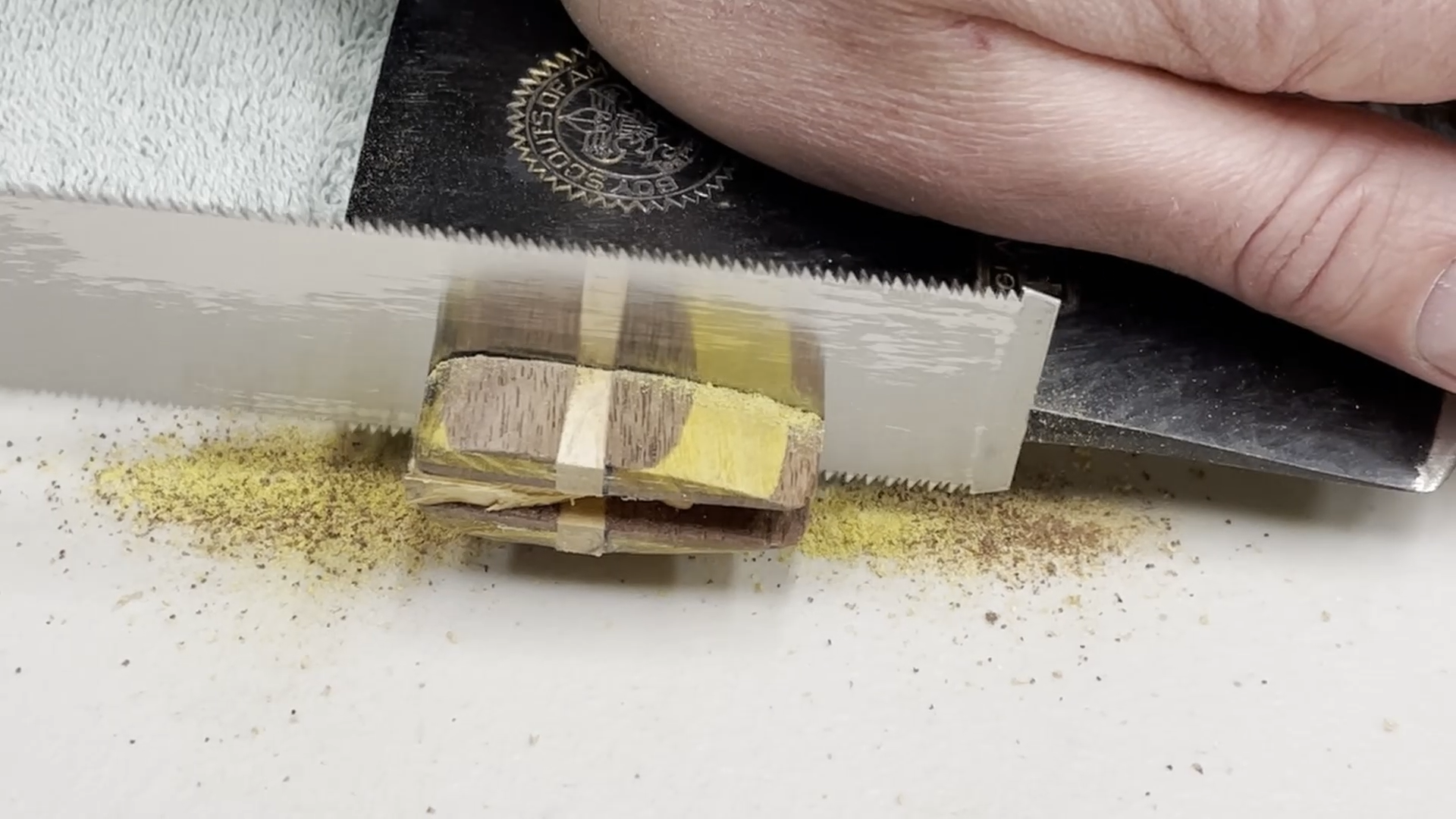
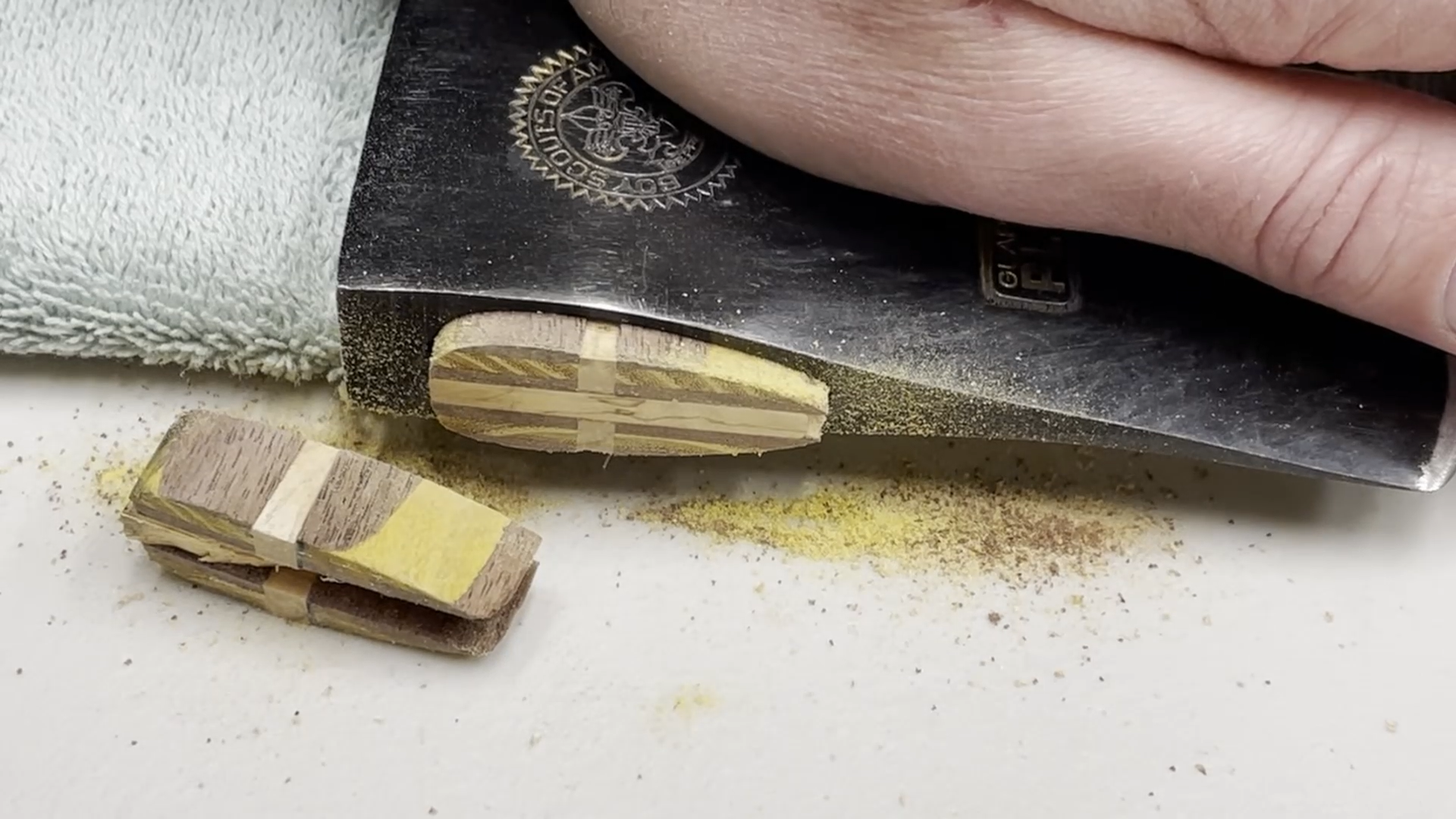

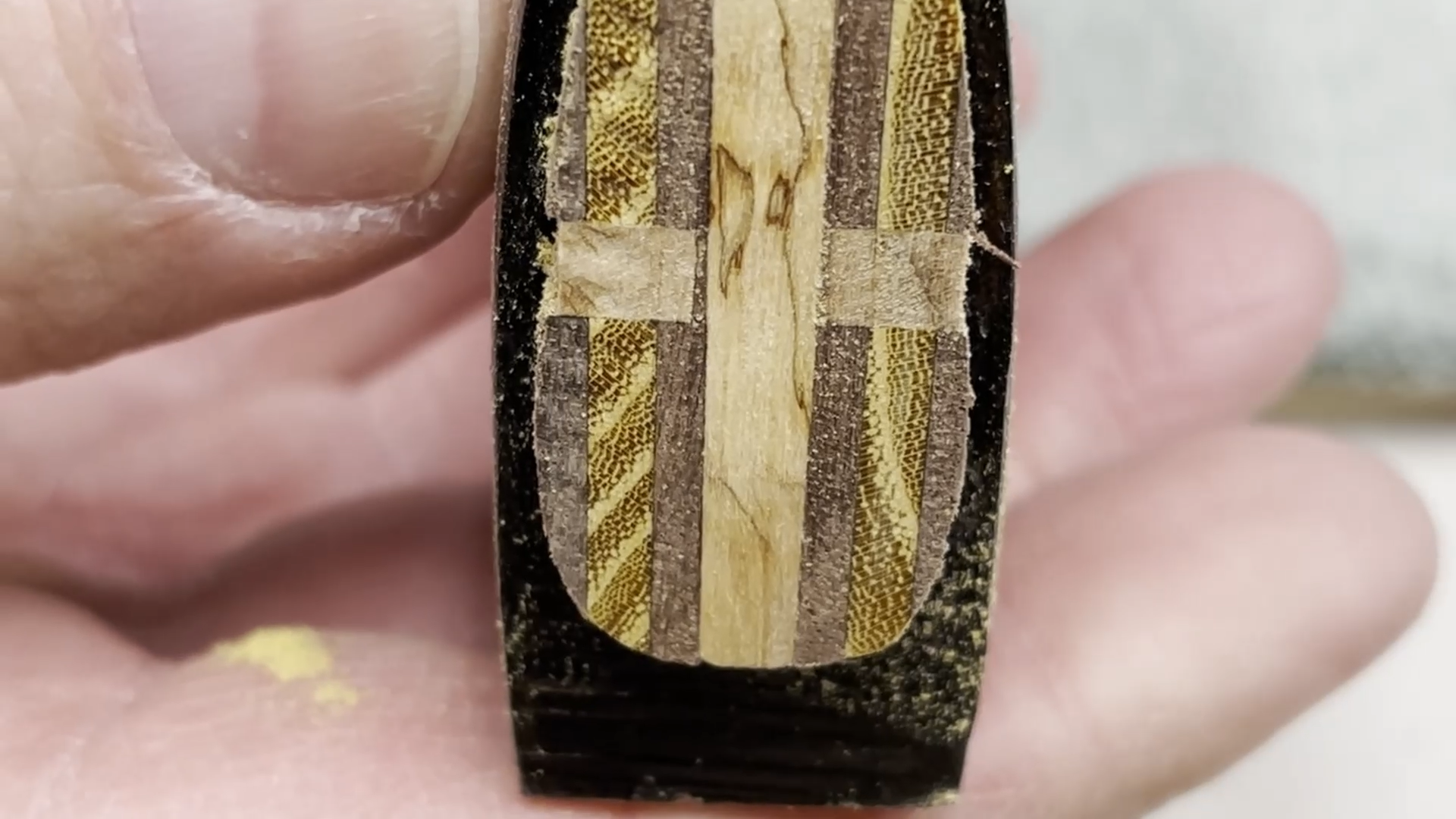
After letting the wedges set for a day I trimmed off the excess using a flush trim saw. These are really great for getting into tight areas and it left a very smooth surface that I didn't feel like I needed to sand before applying the finish. I did end up doing a light sanding on the area where the wedges were cut off. I also lightly sanded the edges here so there would be less chance of chipping the edges.
I sanded the entire handle with up to 400 grit. That may seem a little overkill for a hatchet, but the results after adding the finish show it wasn't that bad of an idea. Check out the final pictures and you will know what I mean.
Step 12: Add Finish
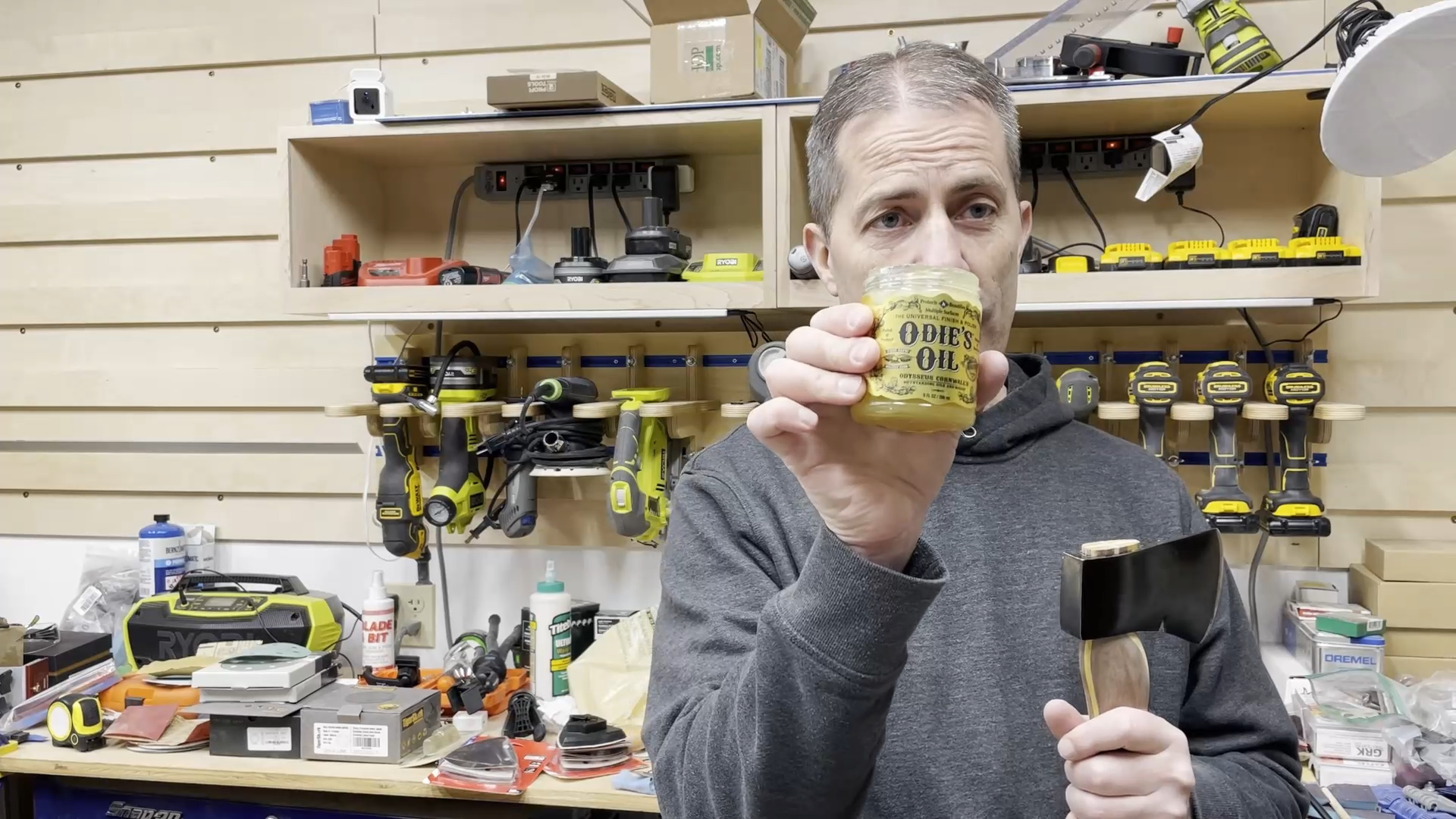
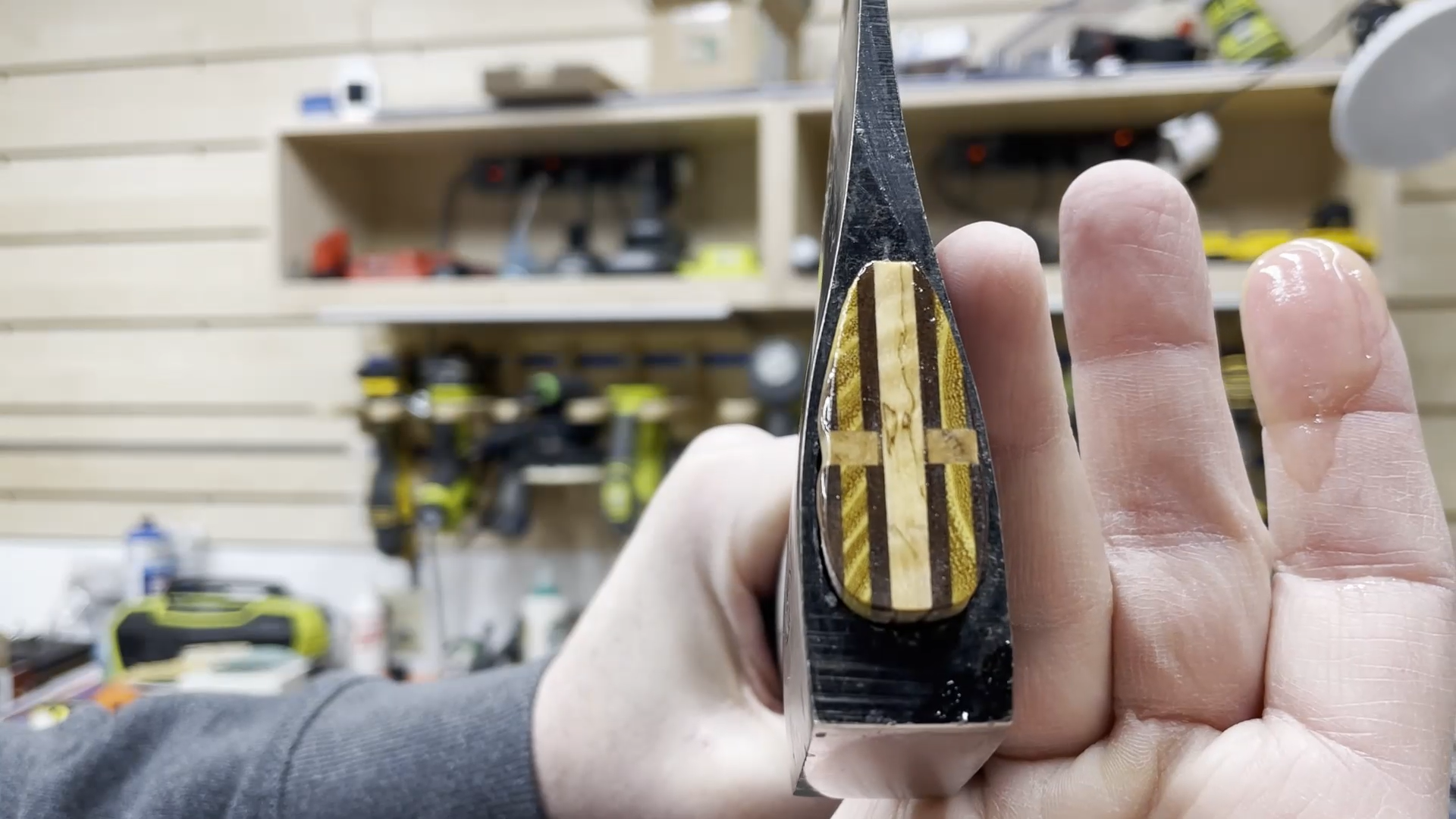
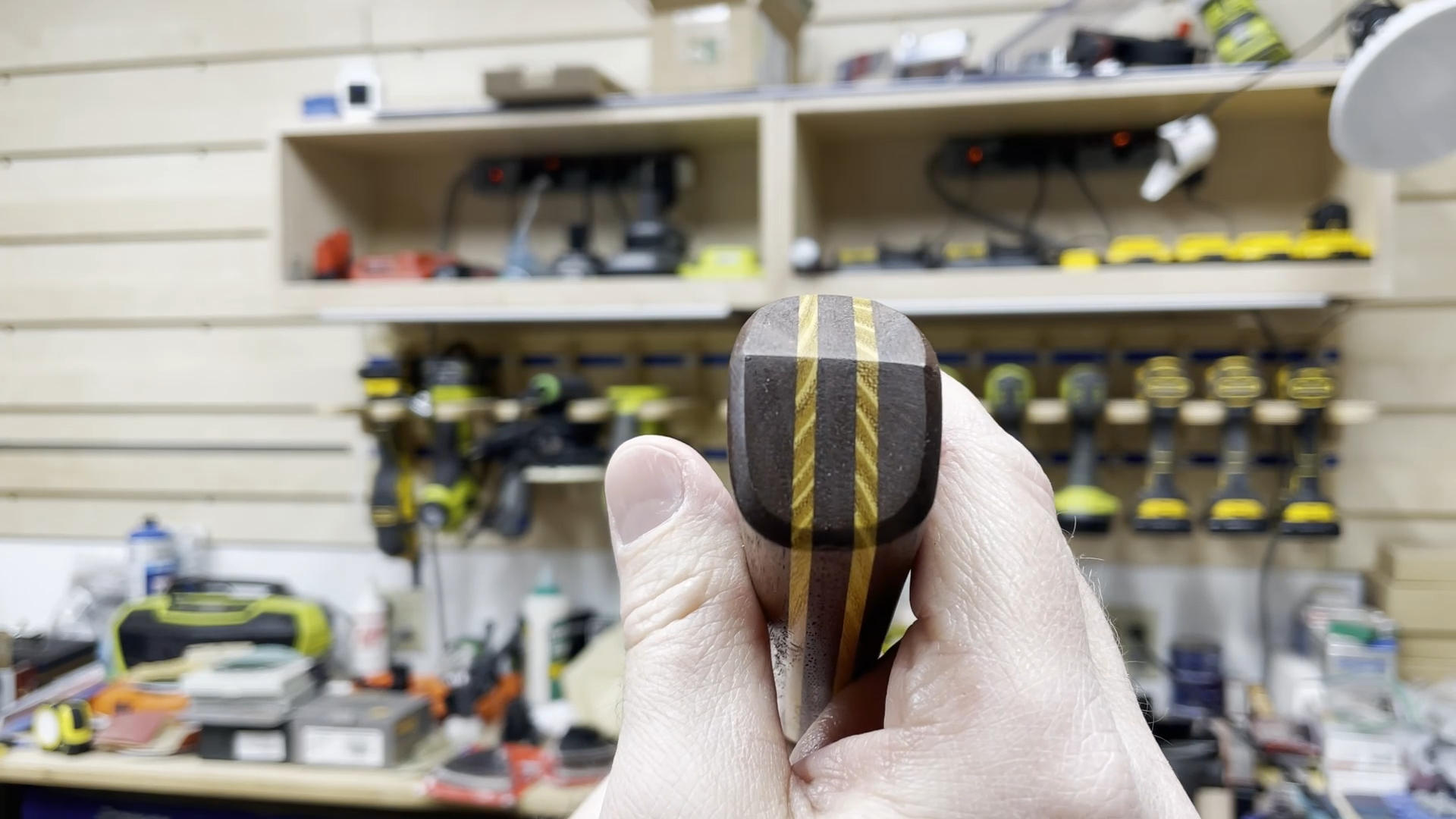
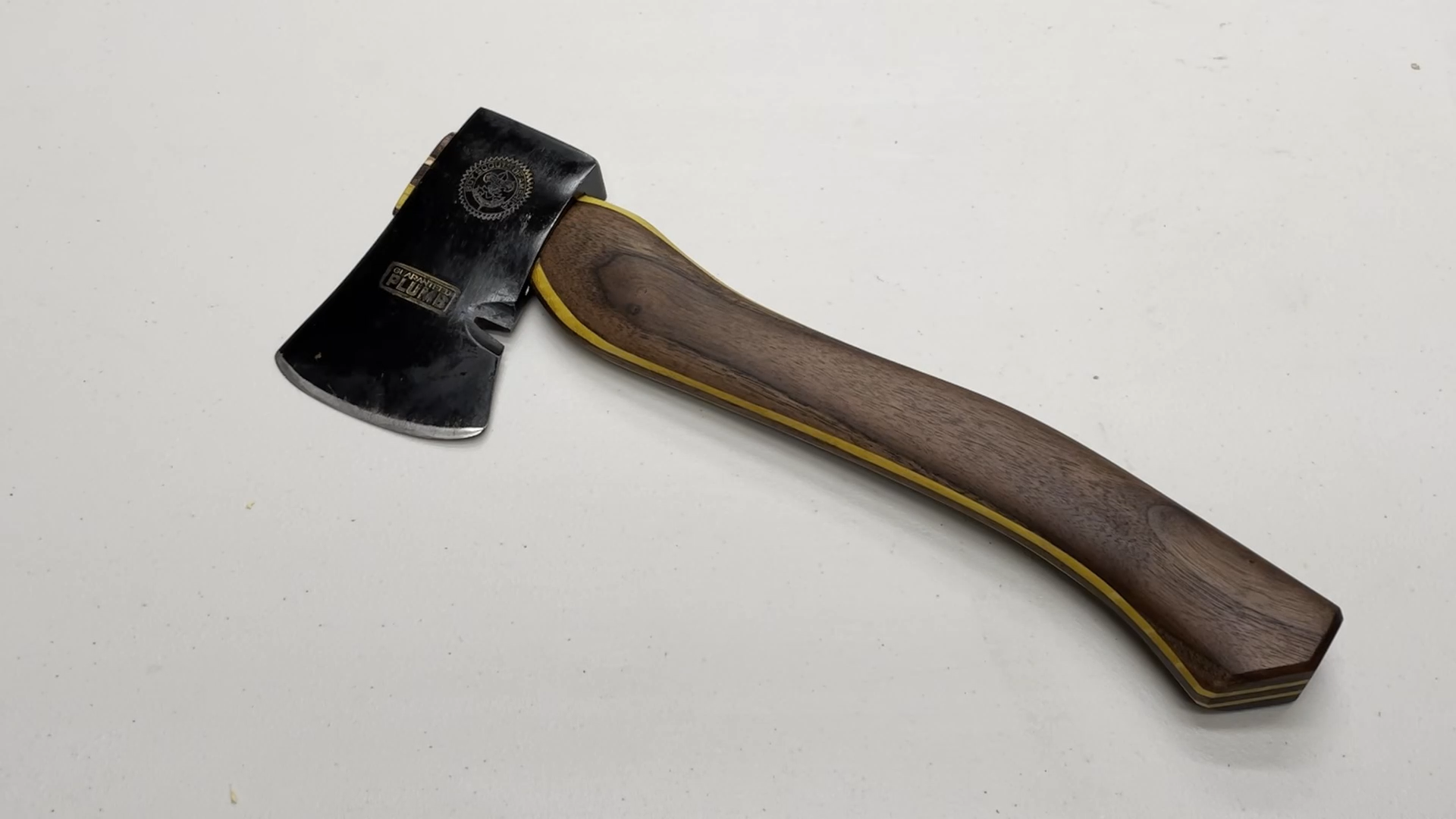
I applied several coats of Odie's Oil finish on the entire hatchet. I absolutely love that stuff. As you can see, it really brings the figure out of the wood. It is really hard to mess up a project using Odie's Oil as you just wipe it on, wait 20 minutes or so, then wipe off the excess.
One of the nice things about using this finish is that you can add more at any time and it blends right in.
Step 13: End Result
Make sure you subscribe to my YouTube channel to follow along on future projects.
This hatchet turned out better than I ever would have guessed. I really love the look of the osage orange sandwiched in between the walnut and the black hatchet head is a great complement to the wood.
You can image how happy I was to give this to my son who had achieved the rank of Eagle Scout. It was a very proud dad moment. I love how this has wood from three generations of family farms as well as the tree I used to play in while I was growing up.
I really enjoyed this project and would love to try another hatchet or ax handle project in the future.
Let me know if you have any questions. I would love to help out if you are considering doing something like this.
